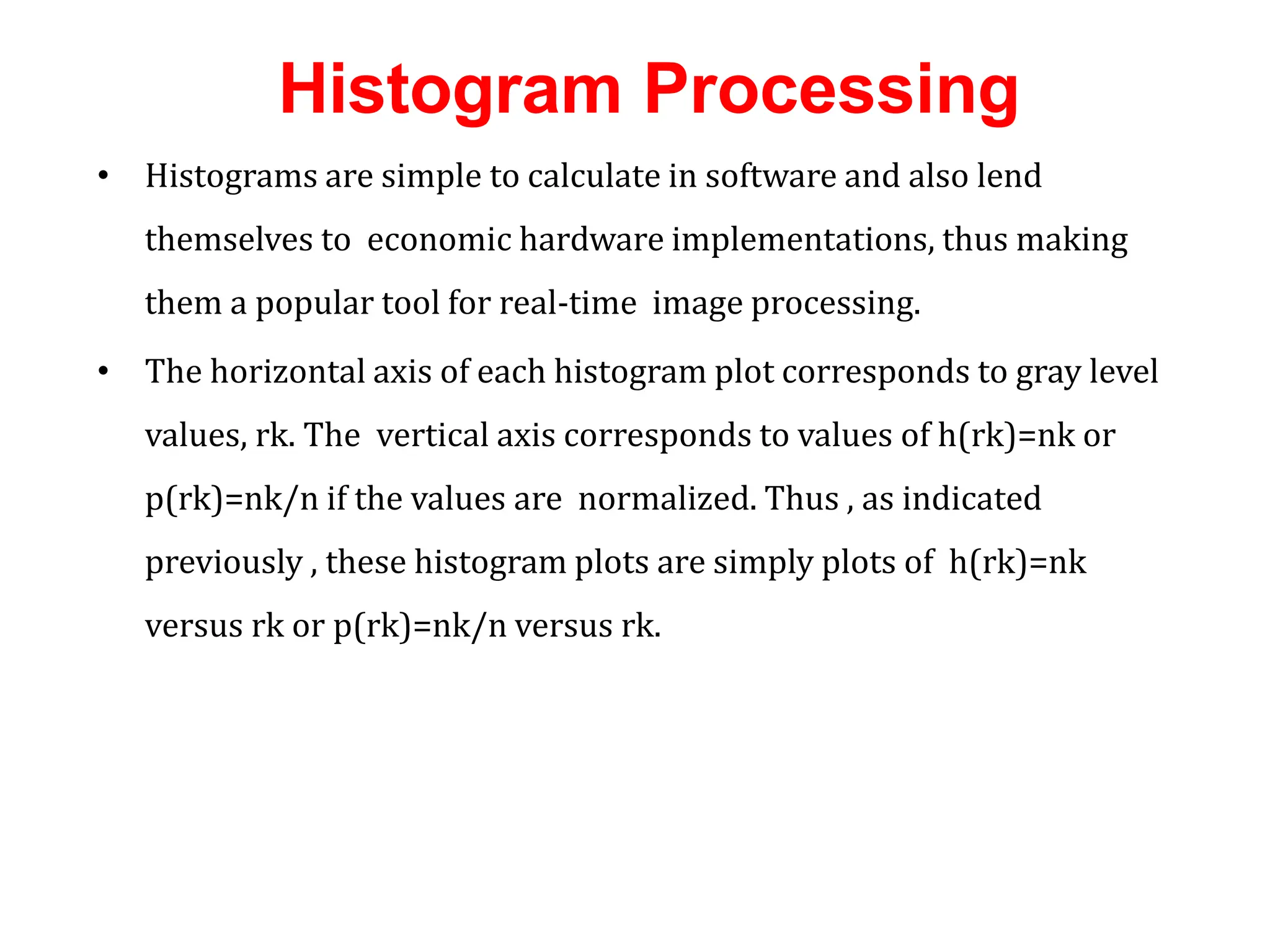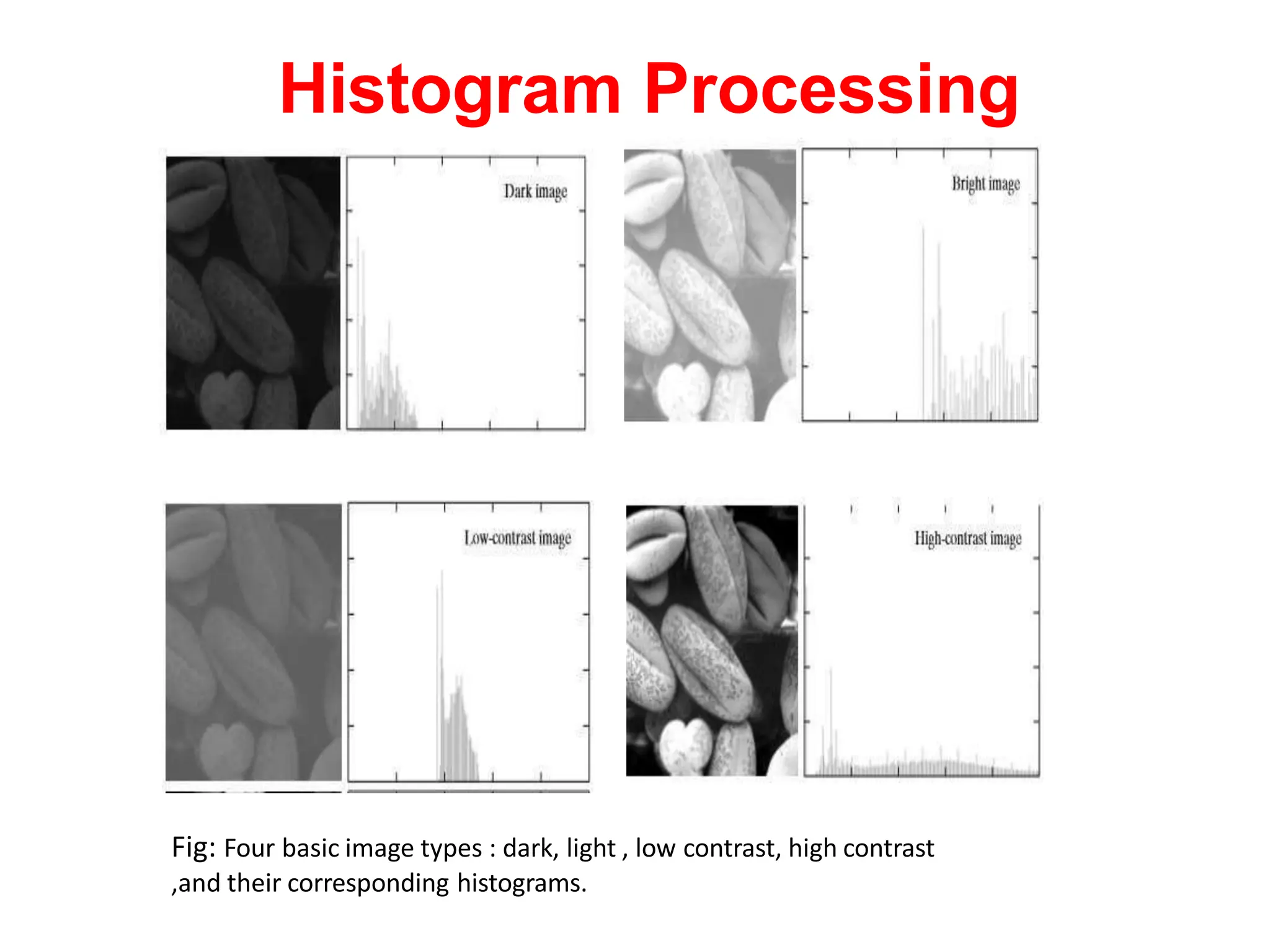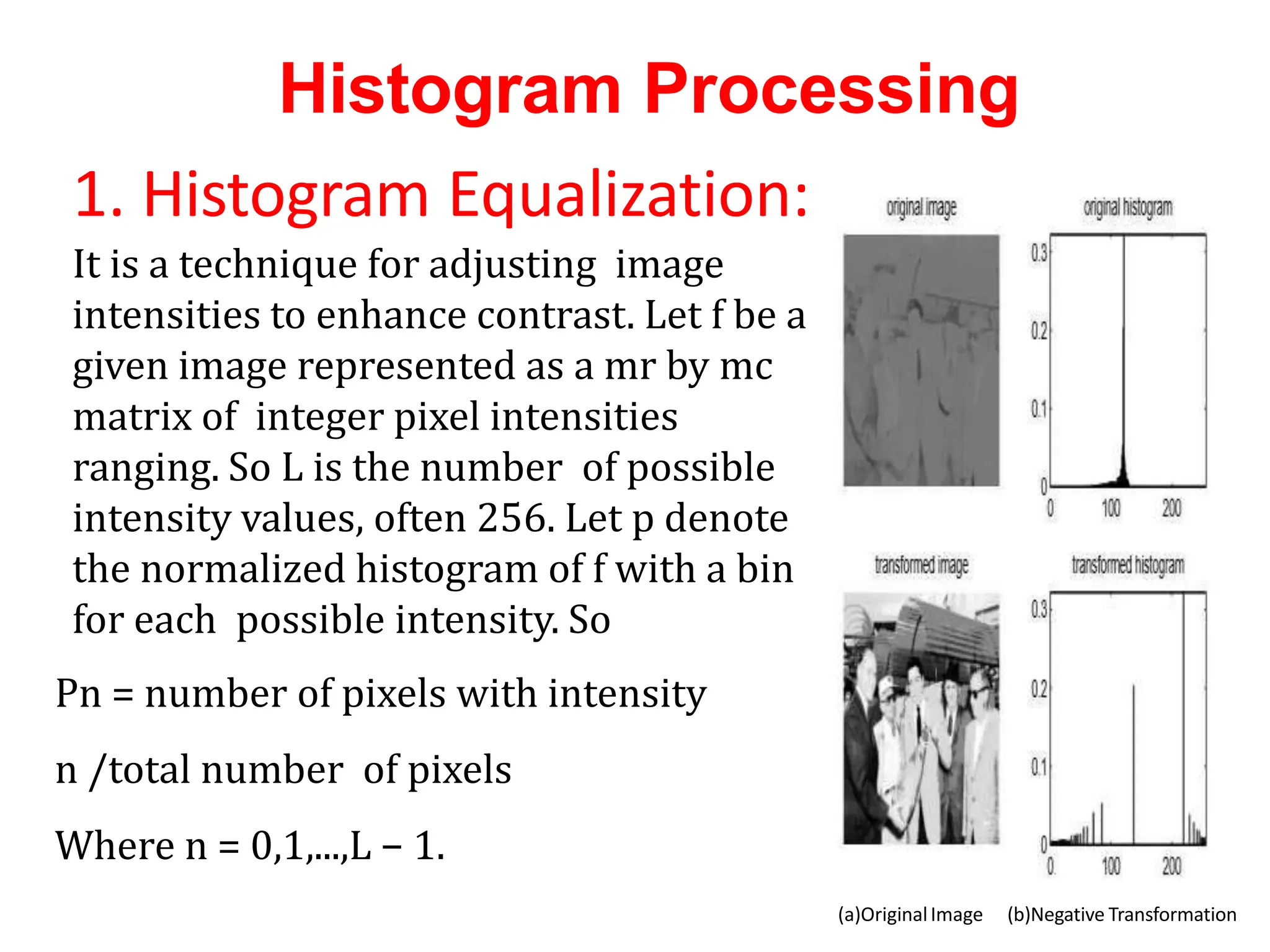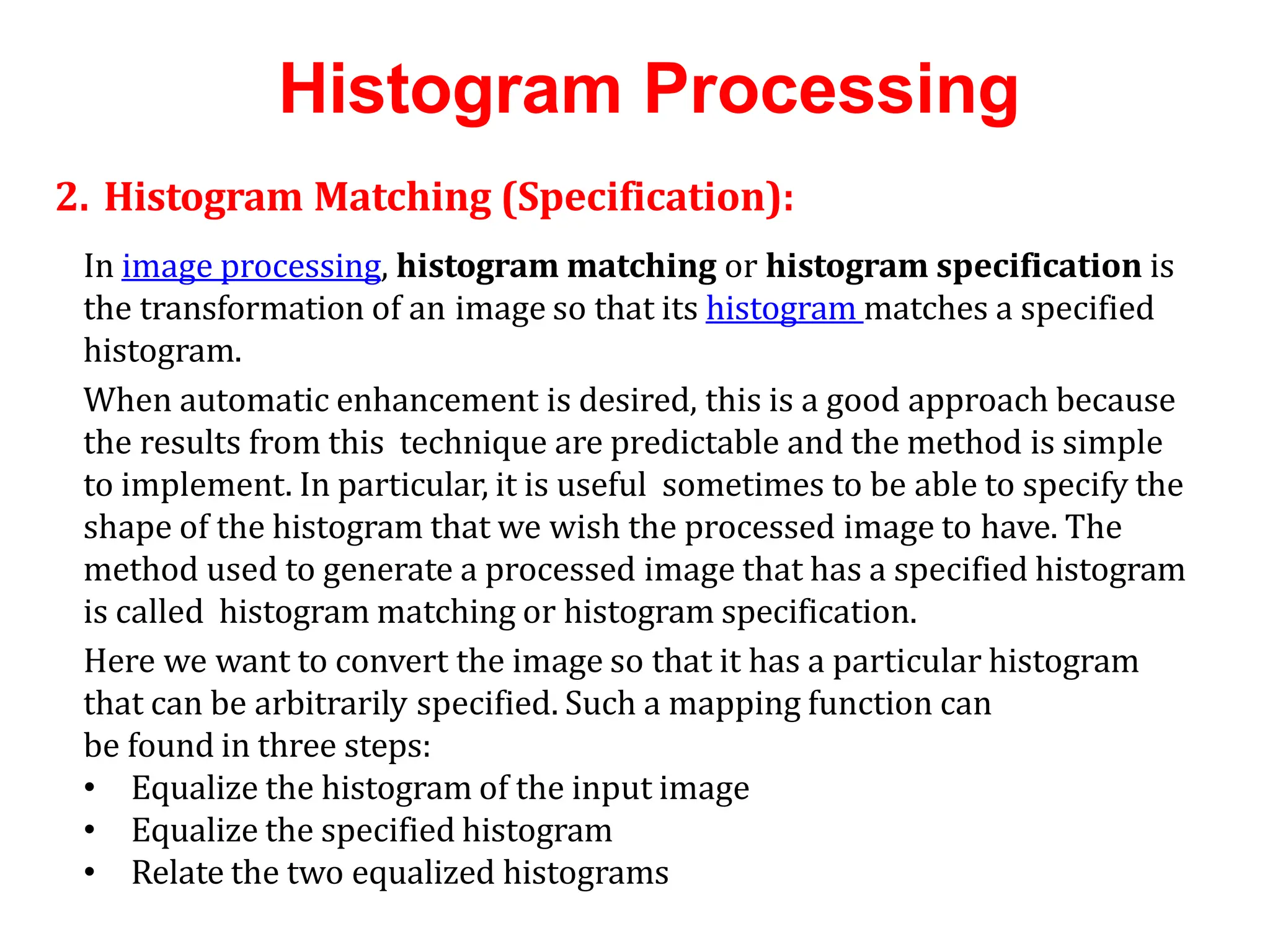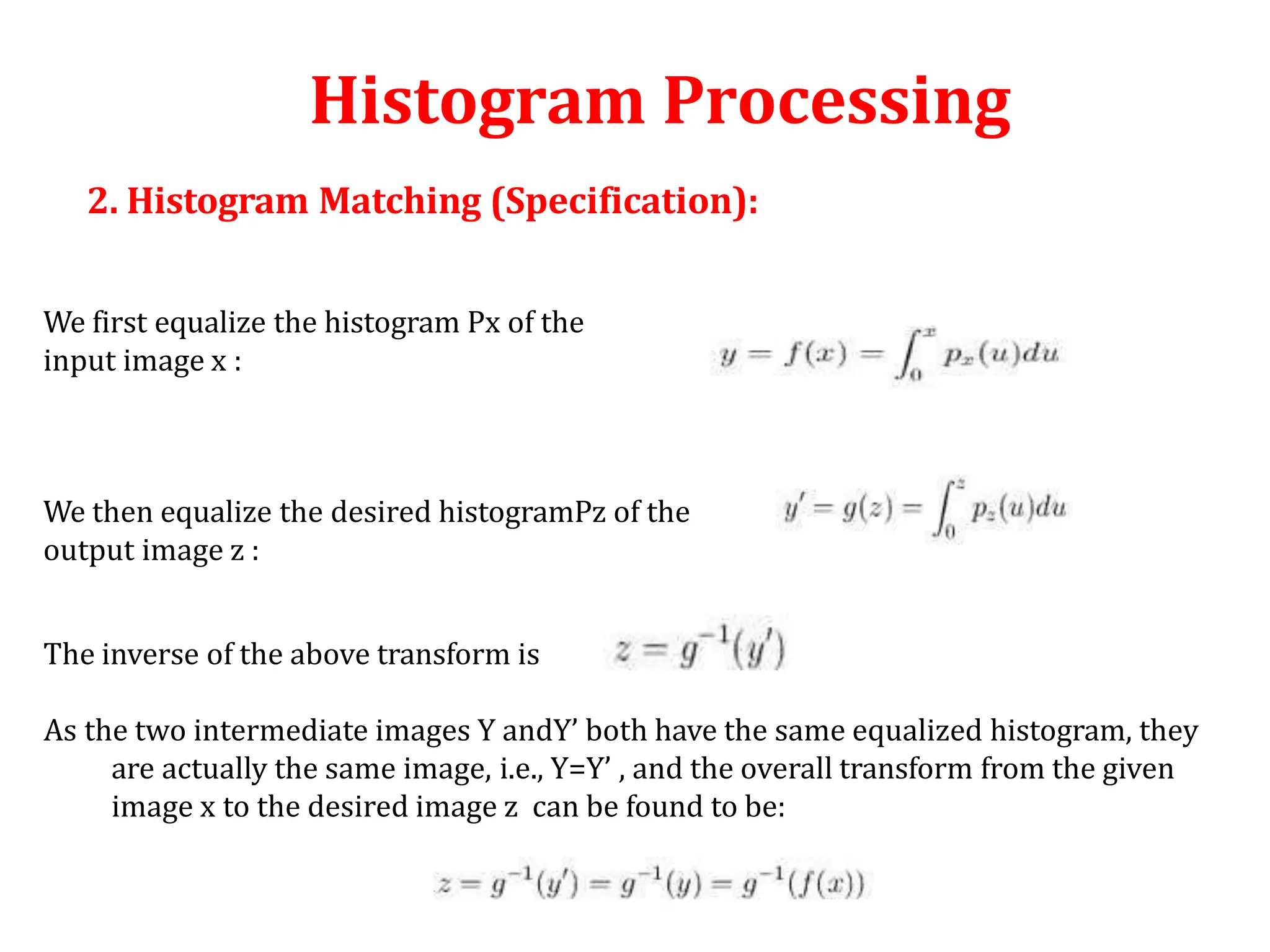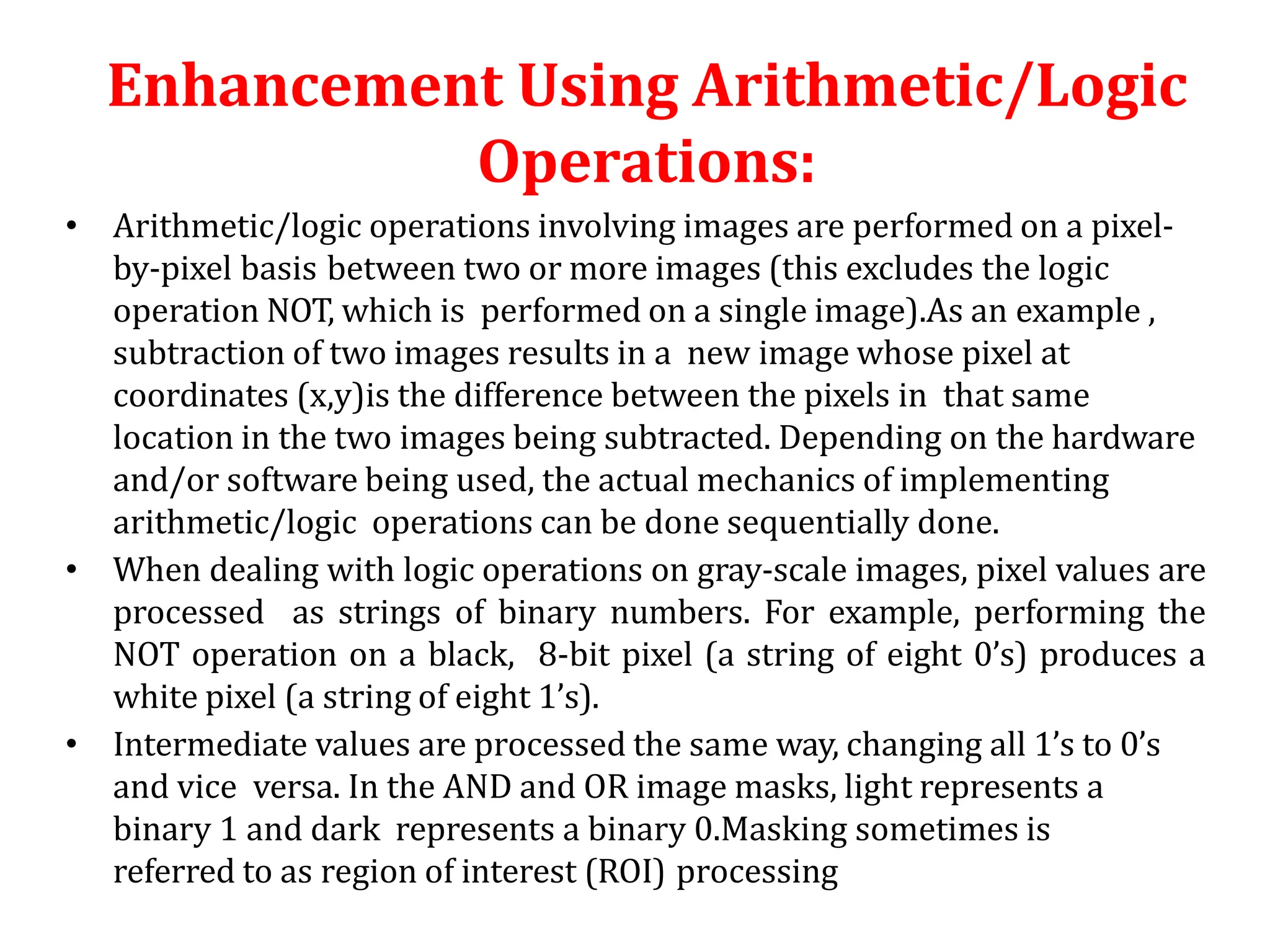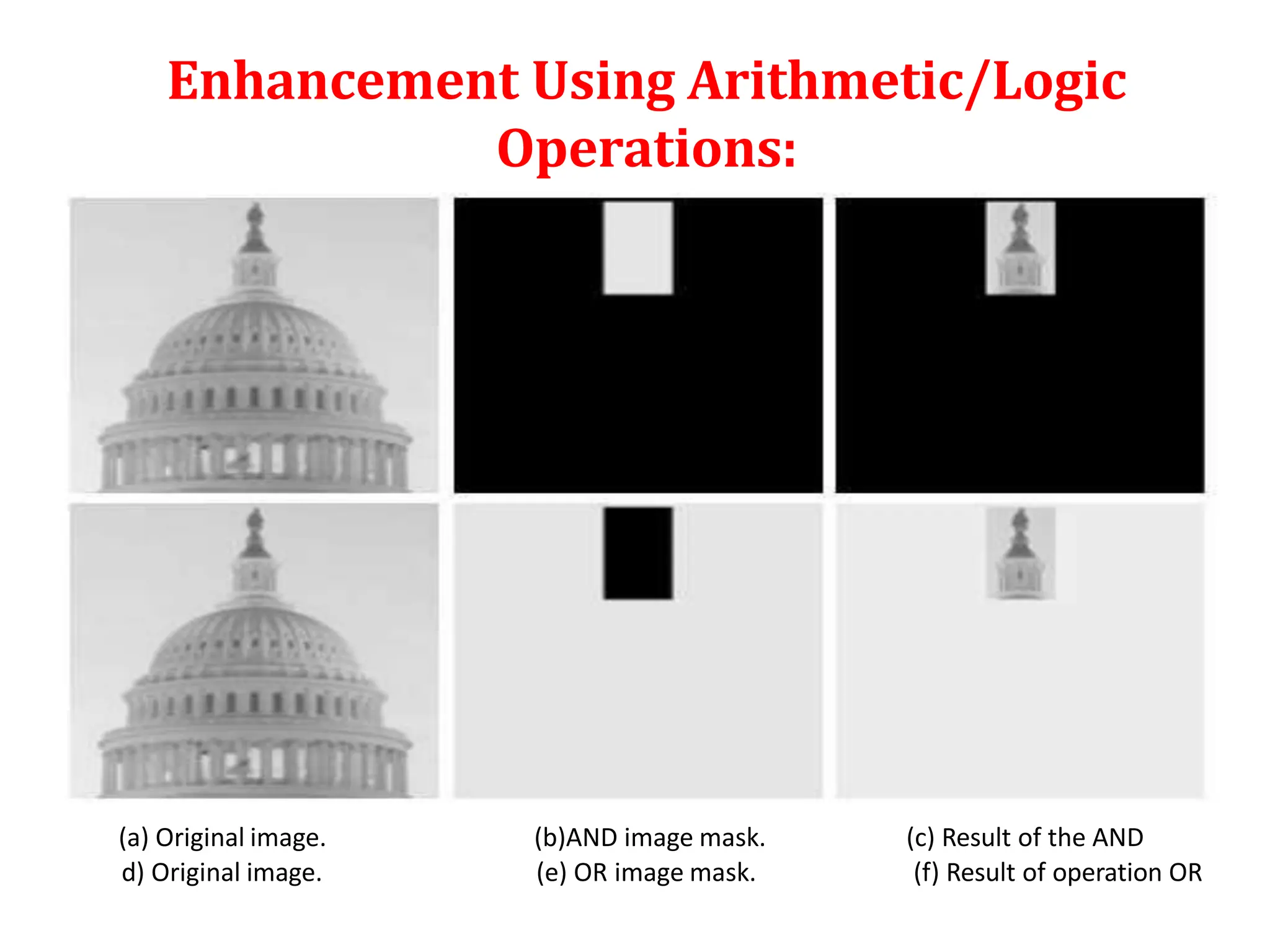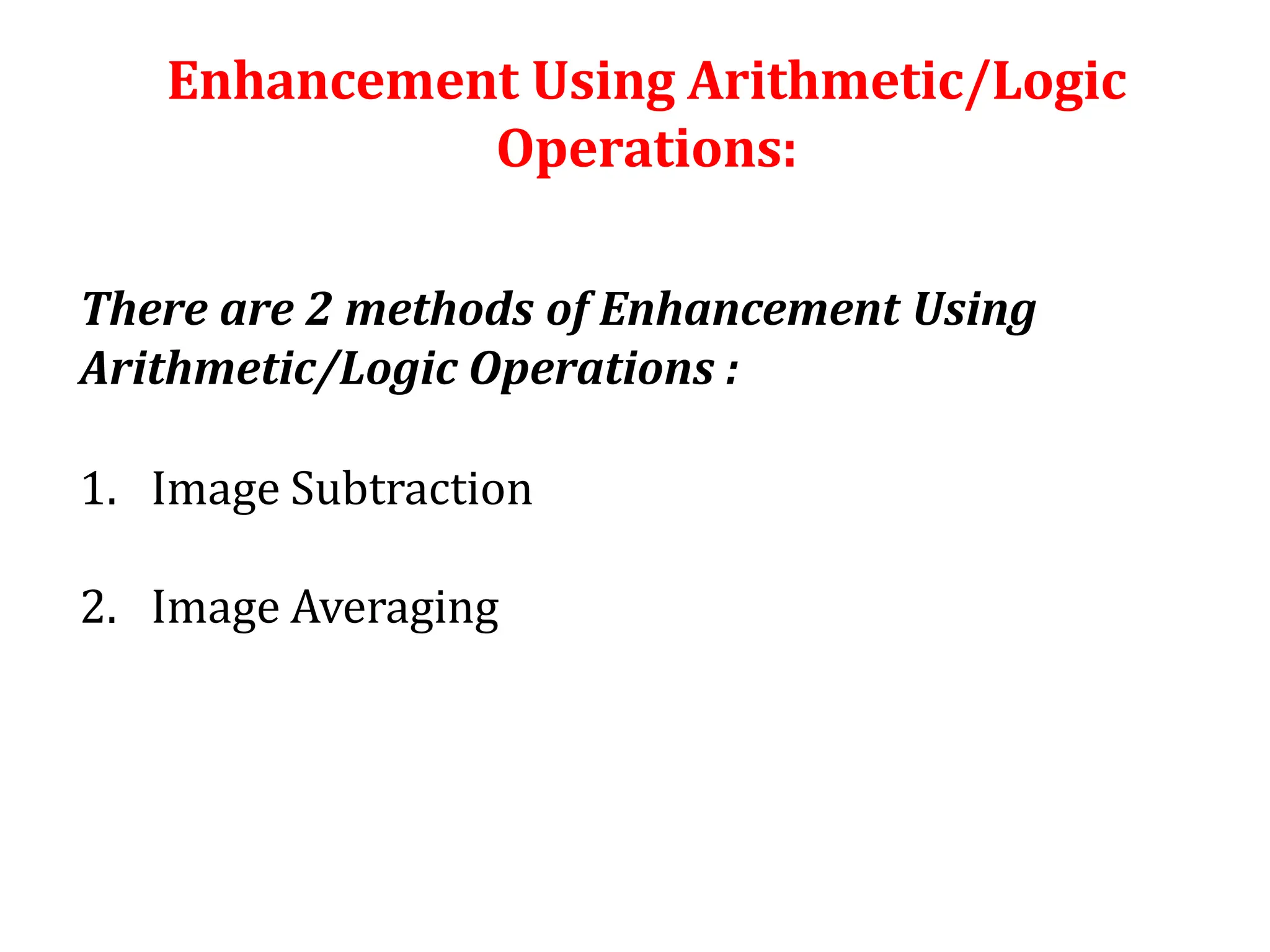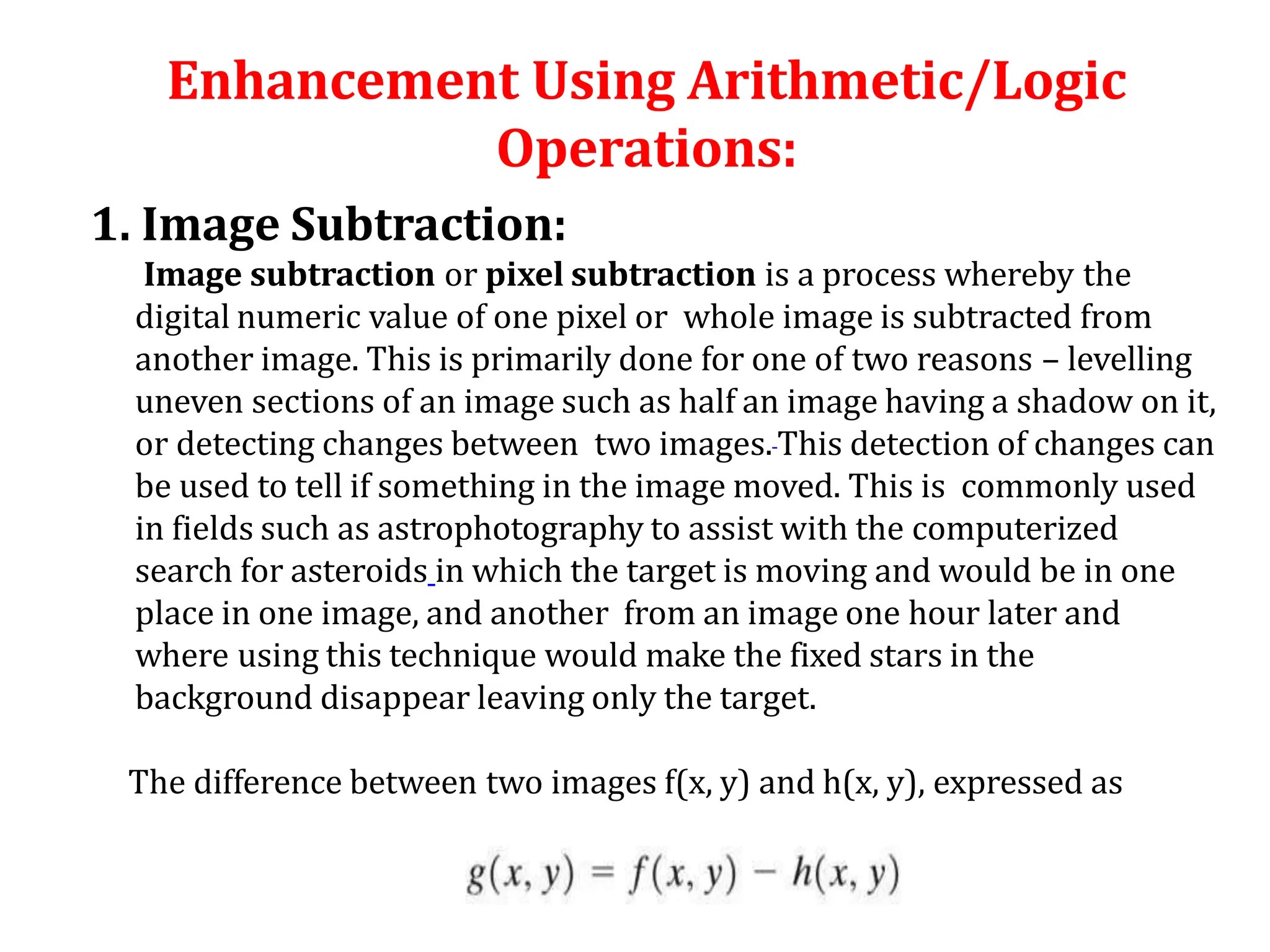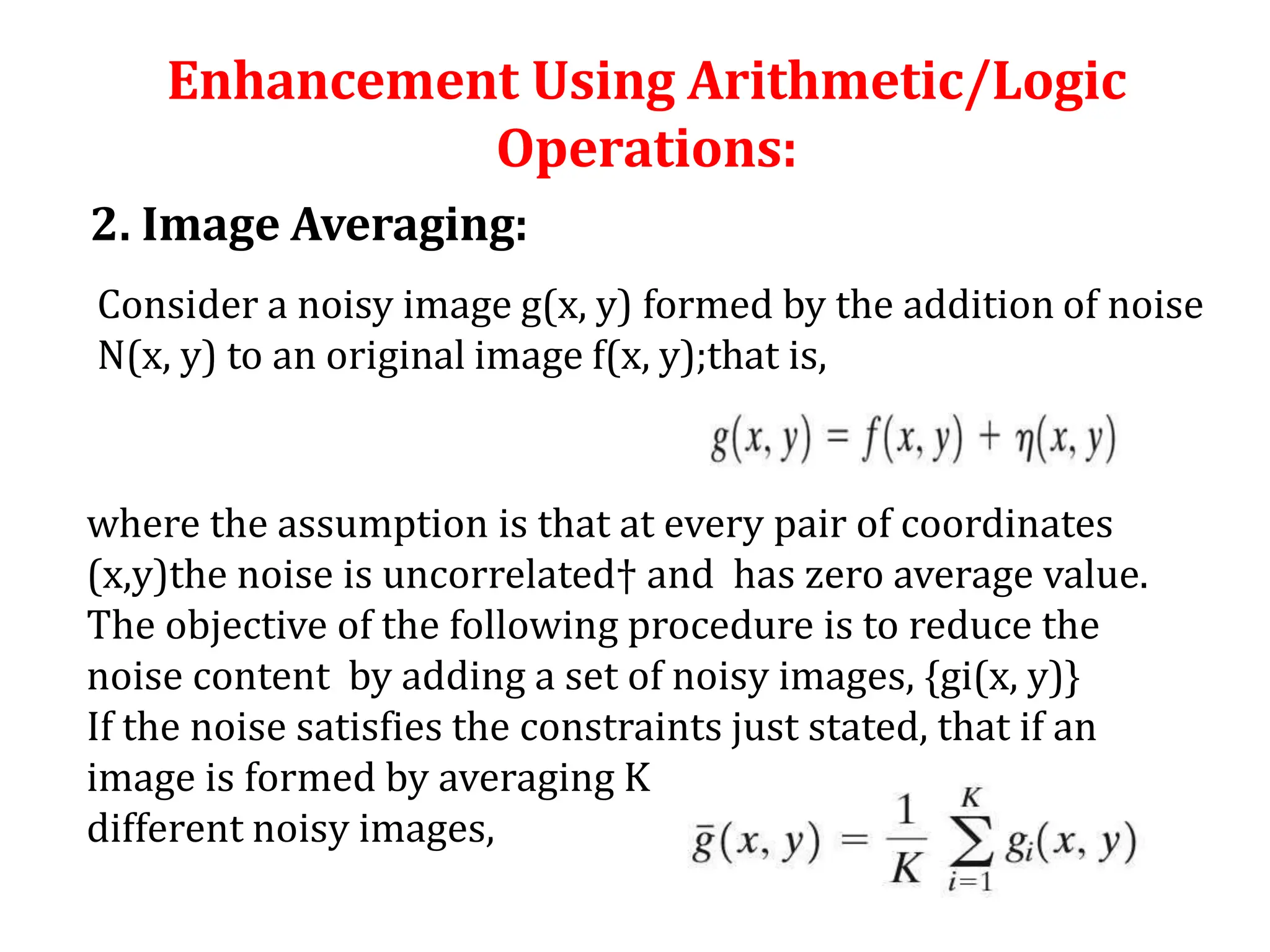The document discusses various image enhancement techniques in the spatial domain. It describes point processing and mask processing as two types of spatial domain methods. Point processing involves transformations based on individual pixel intensities, while mask processing uses neighborhoods of pixels. Examples of point processing techniques include contrast stretching, thresholding, and logarithmic, power-law, and piecewise linear transformations. Histogram processing and arithmetic/logic operations are also discussed as methods for image enhancement in the spatial domain.
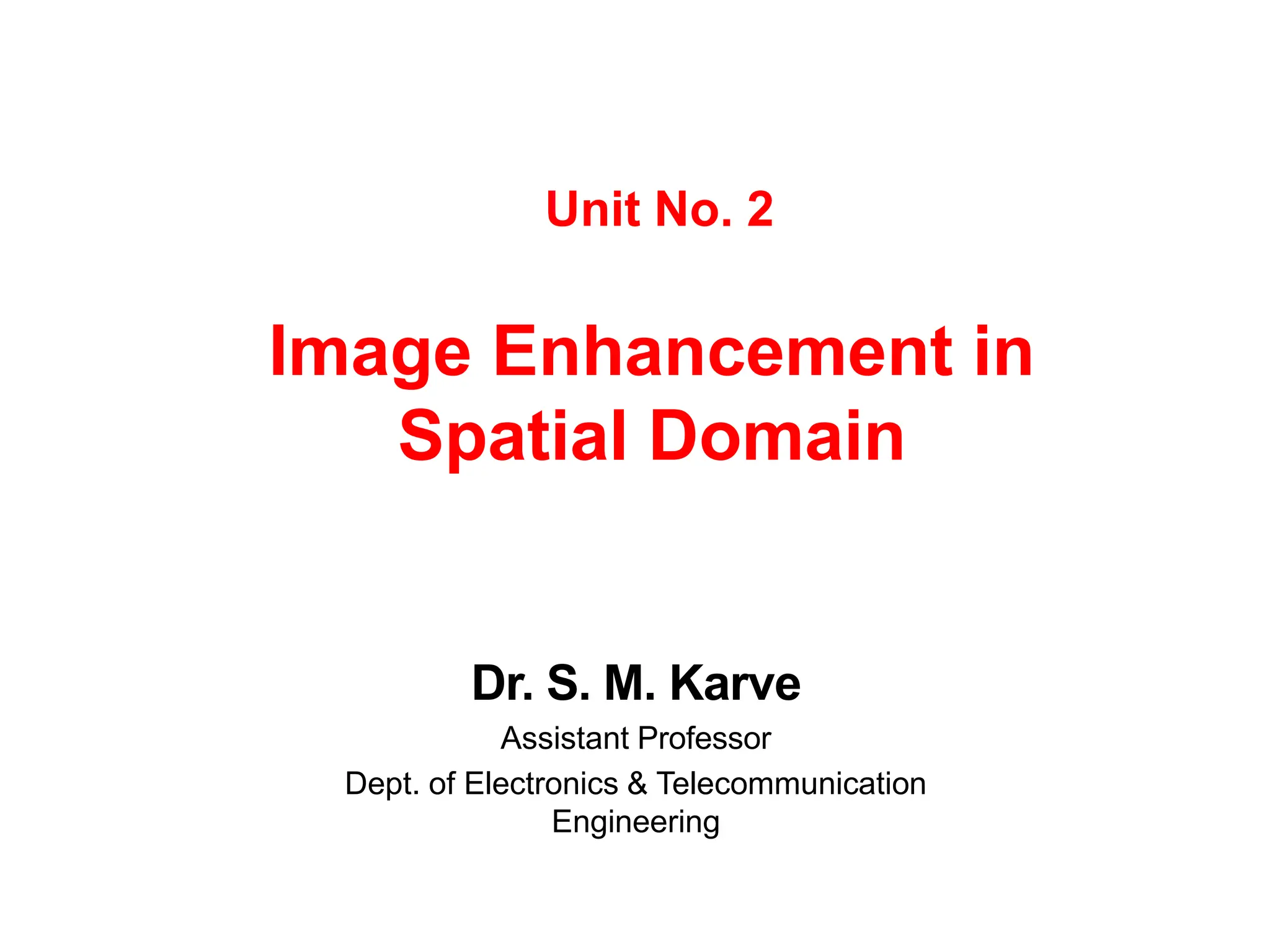
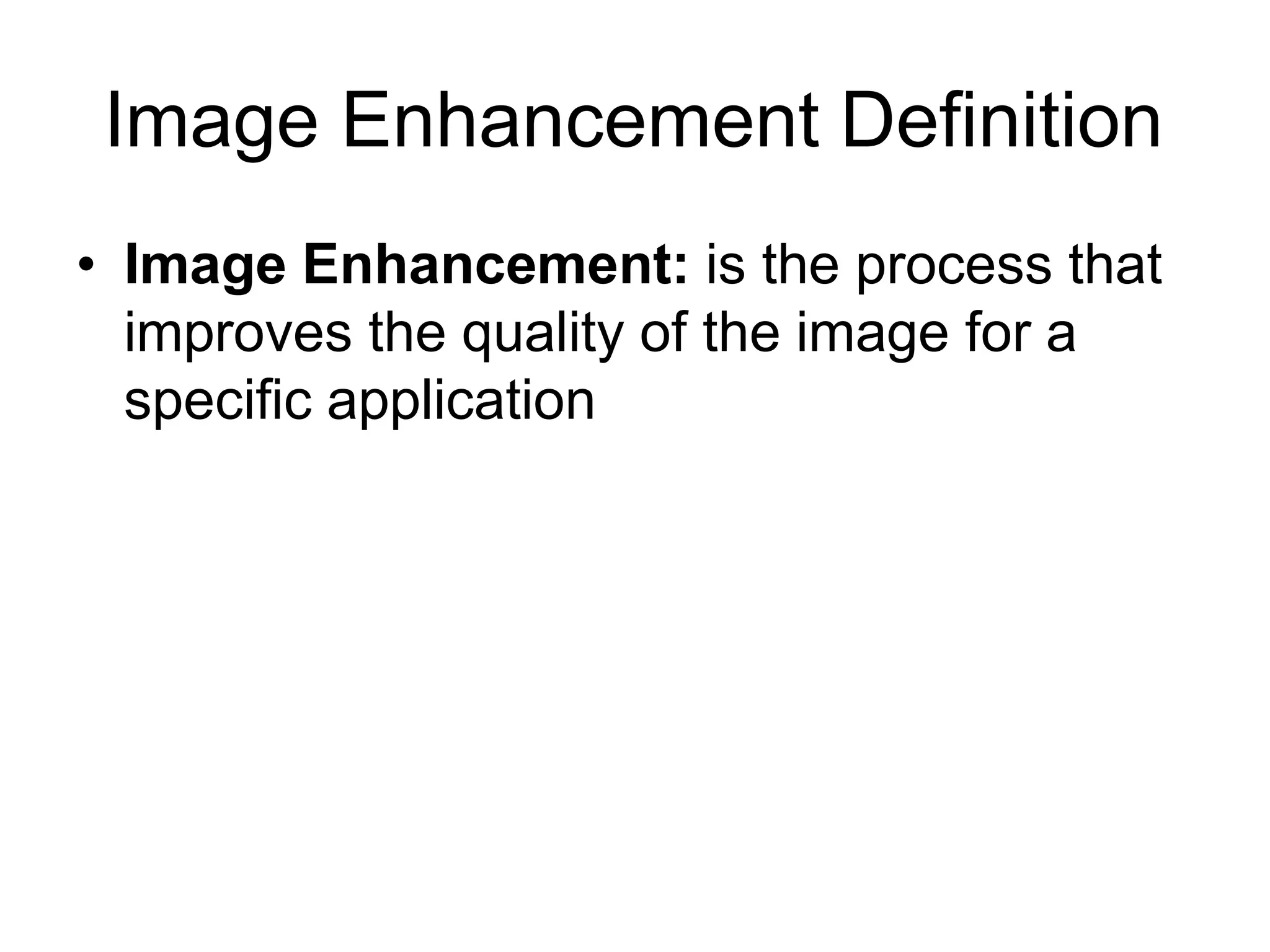
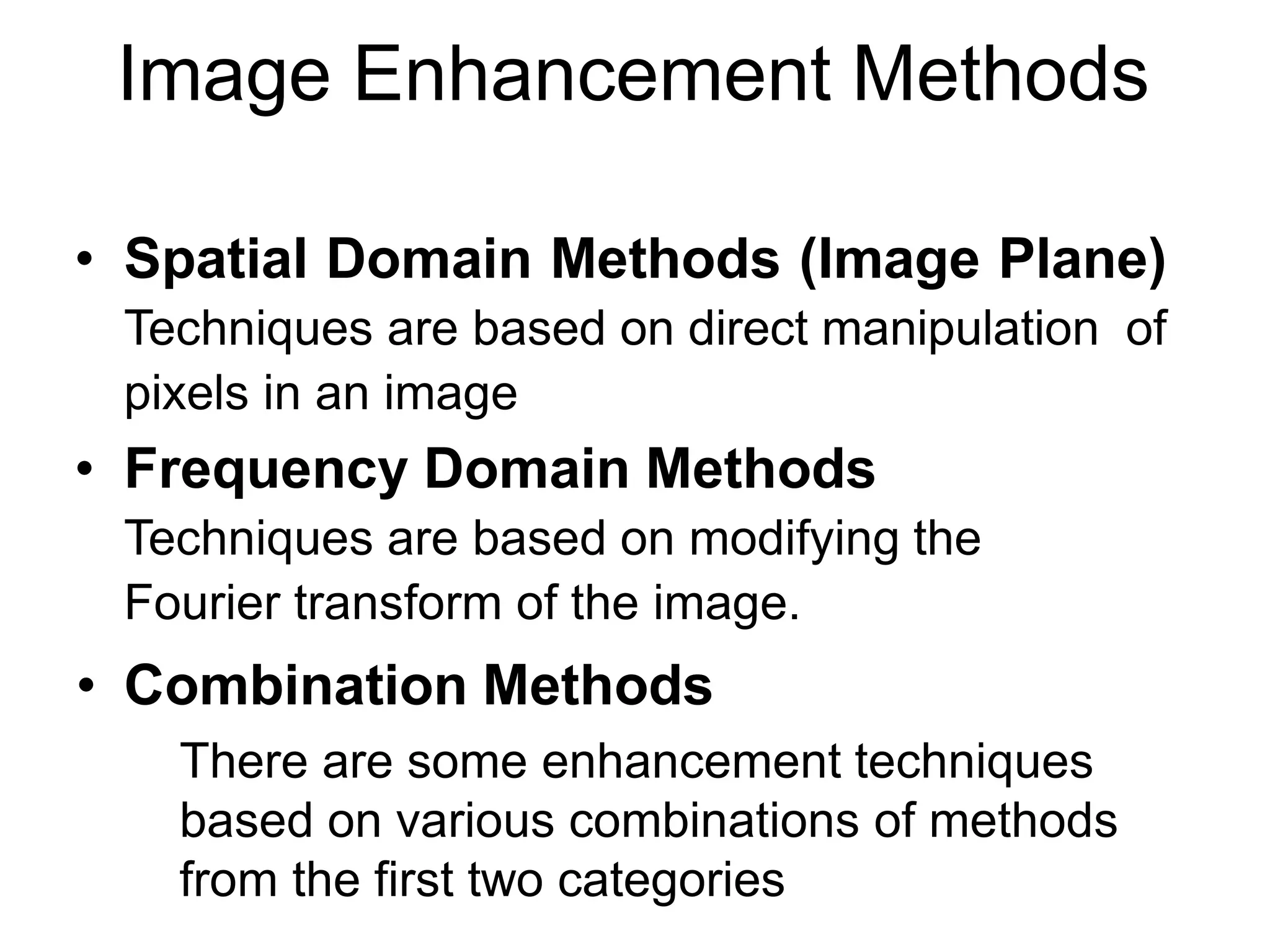
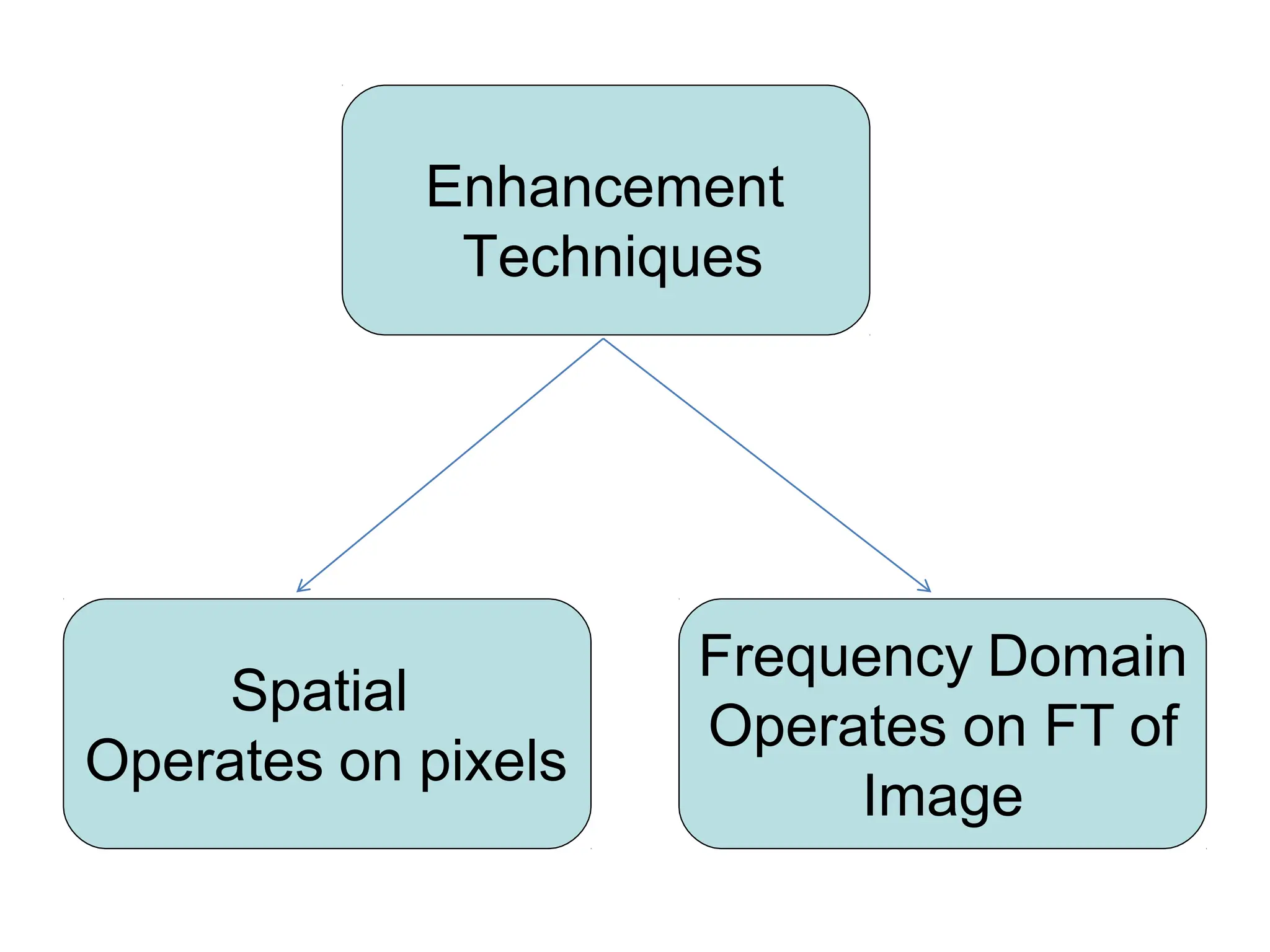
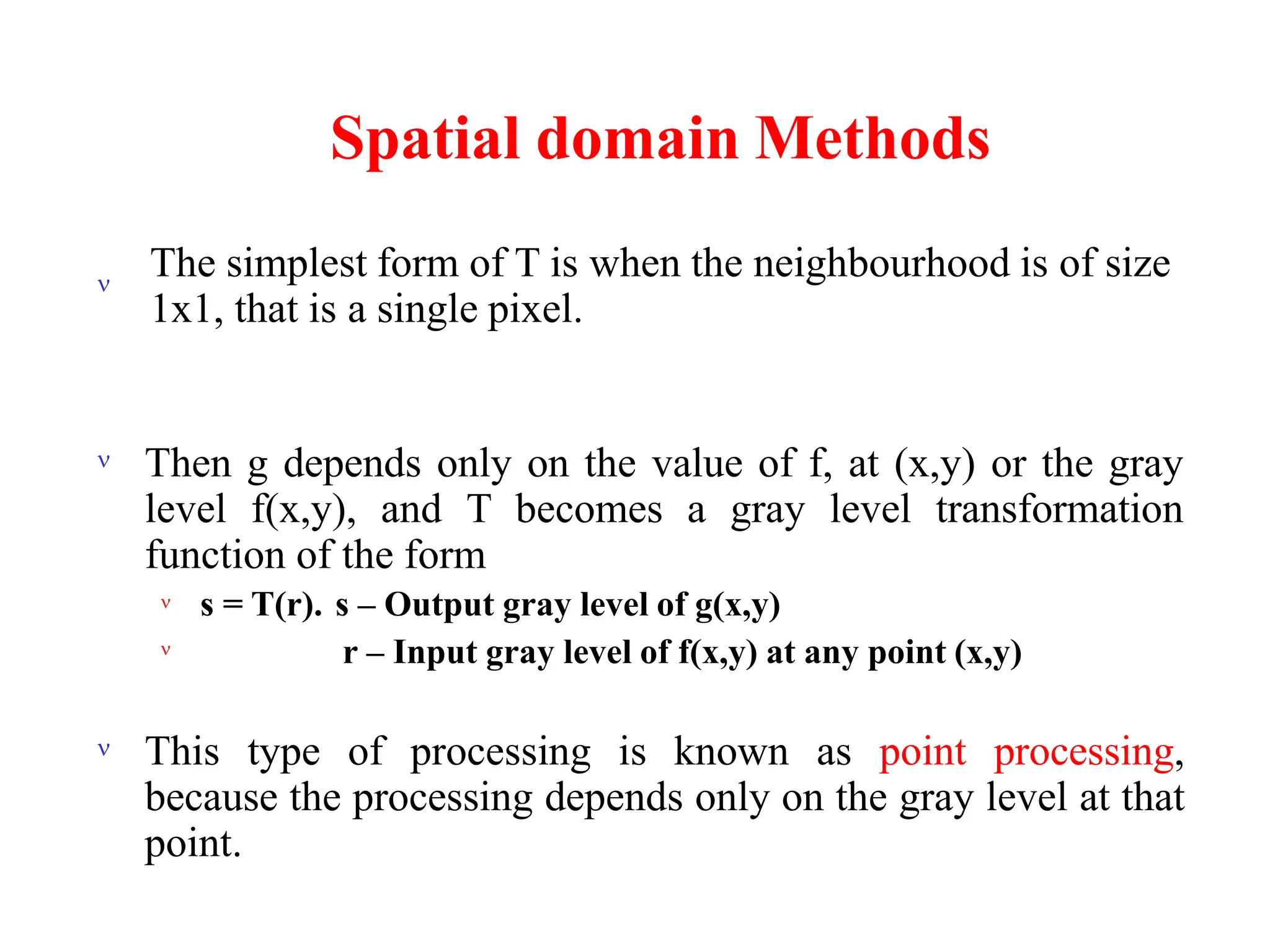

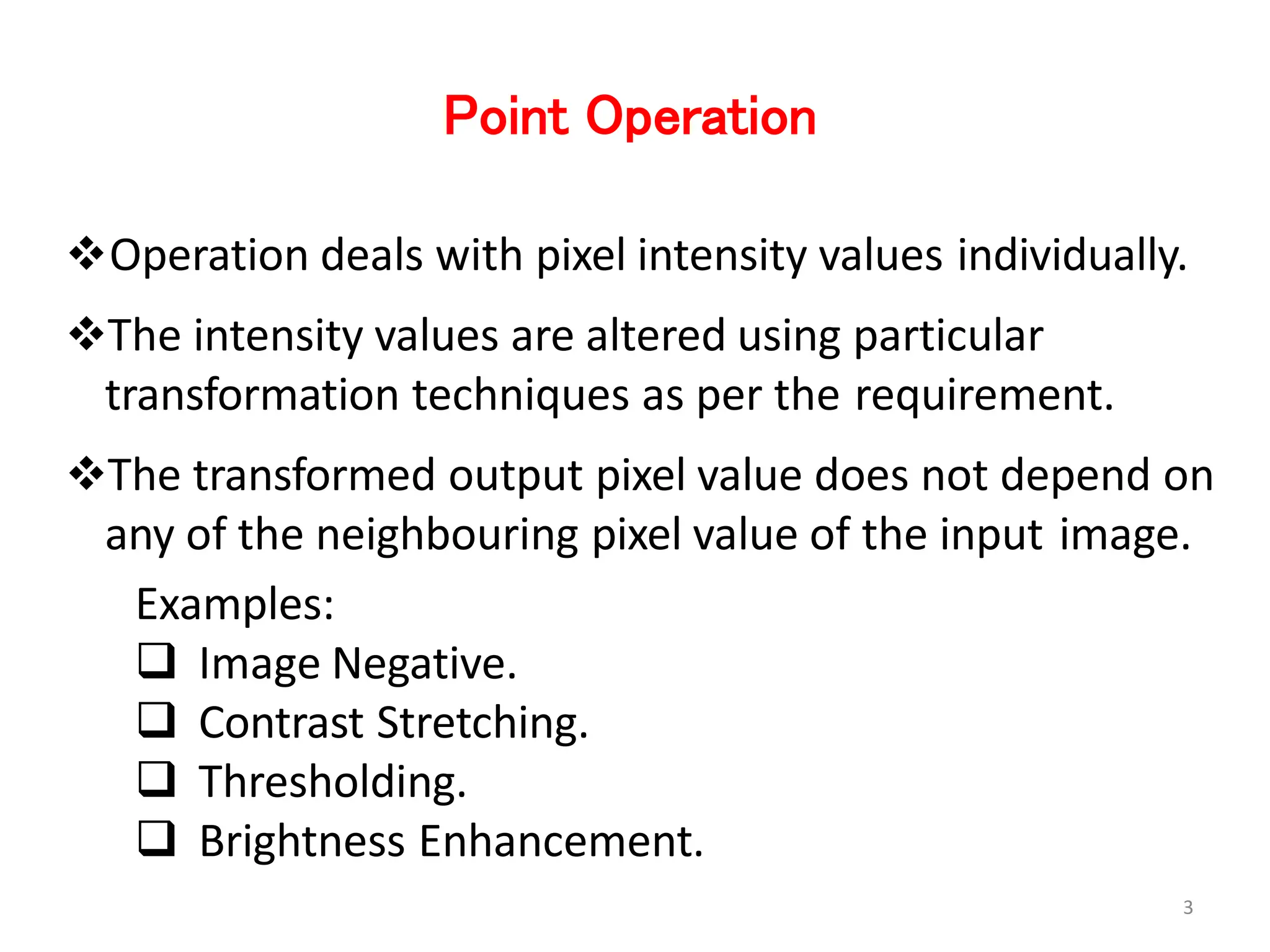
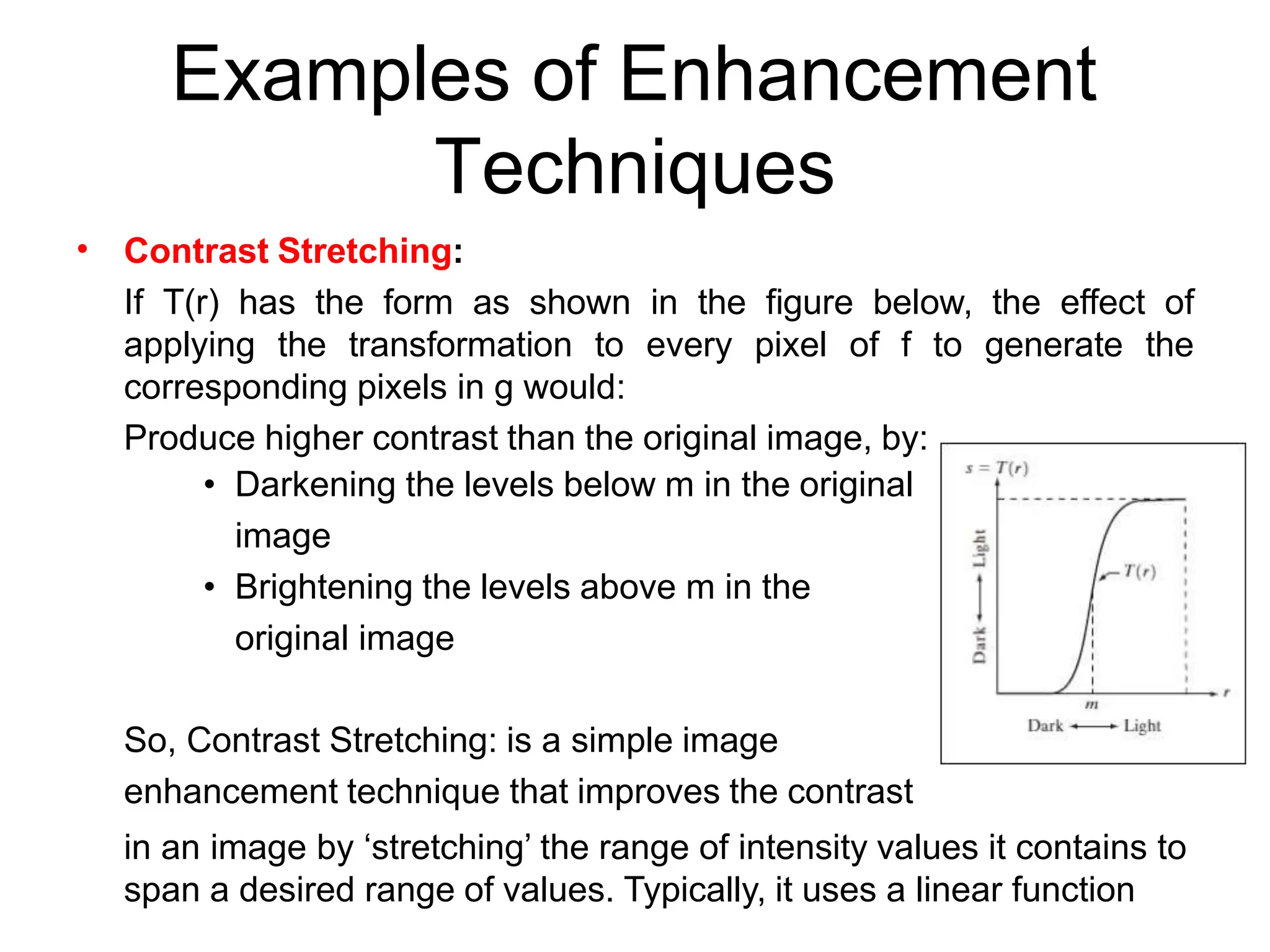
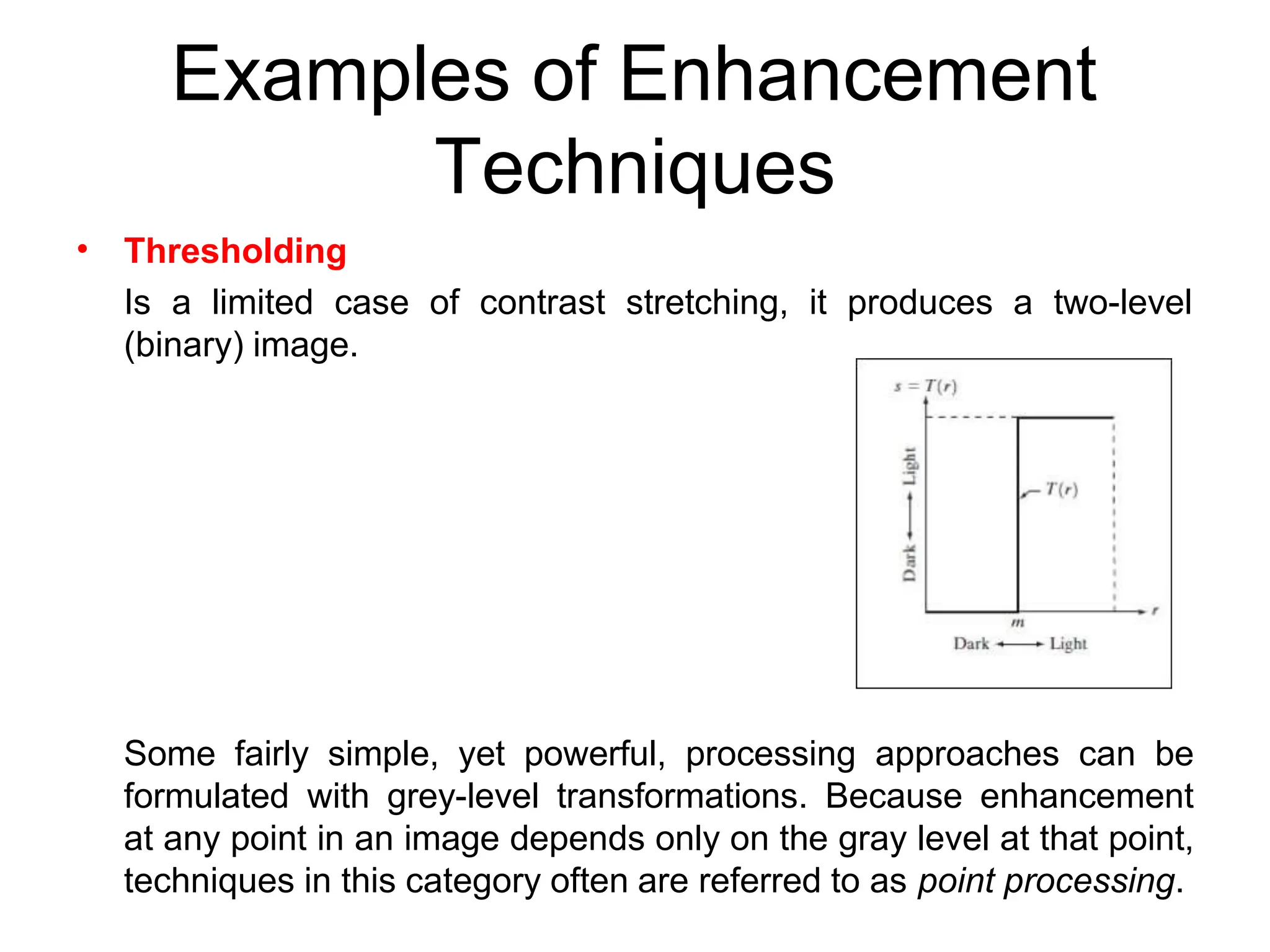
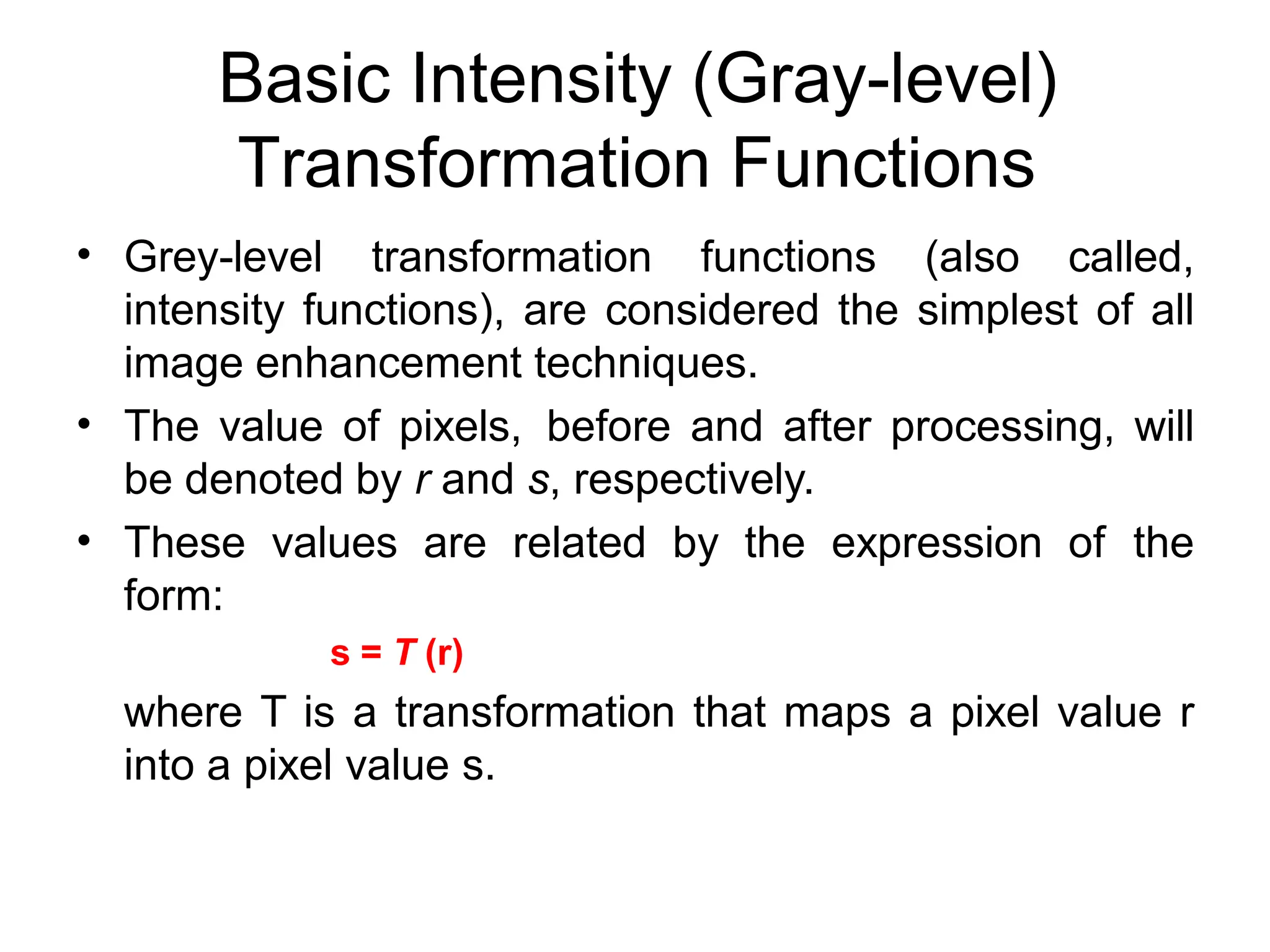
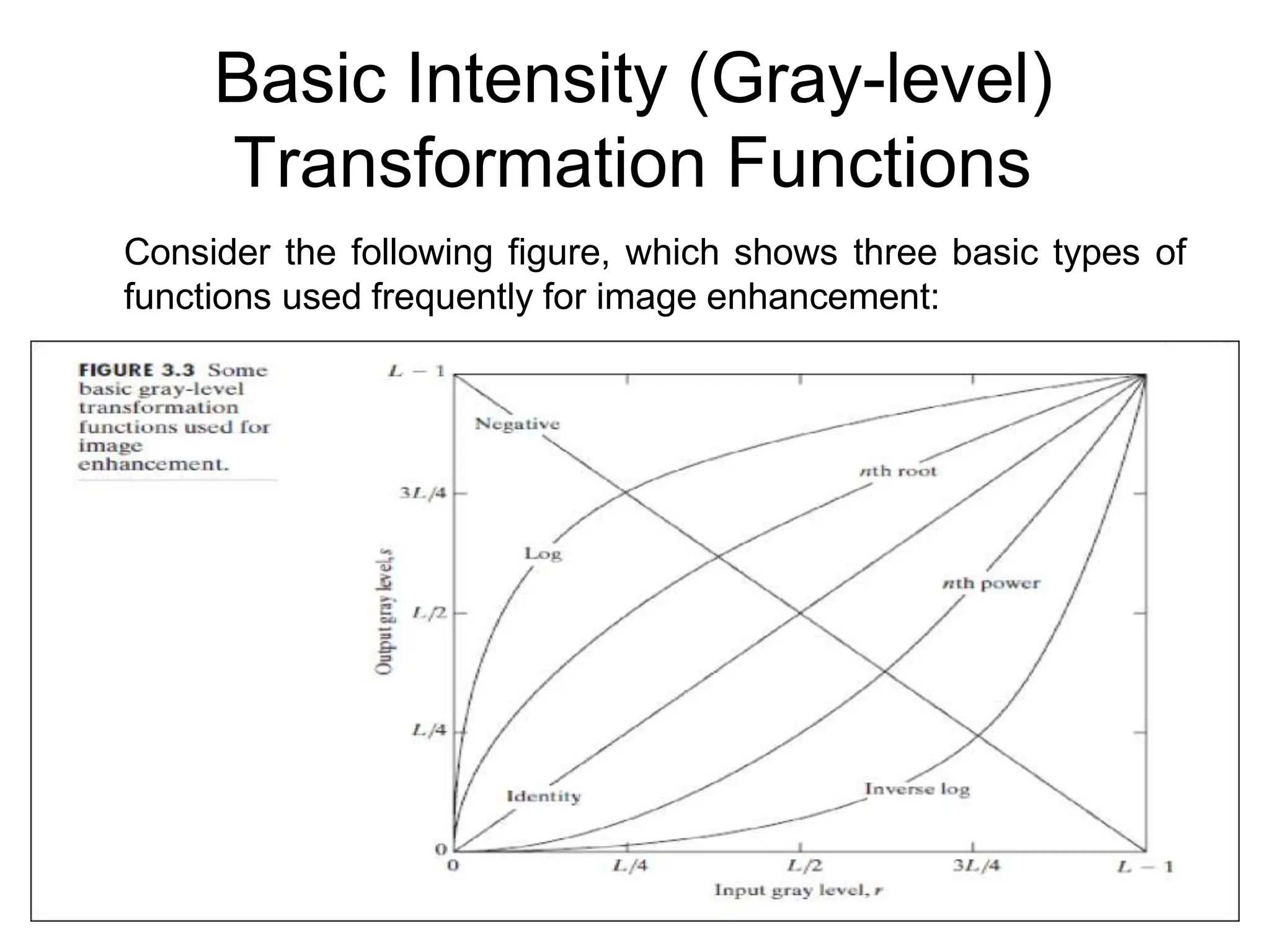
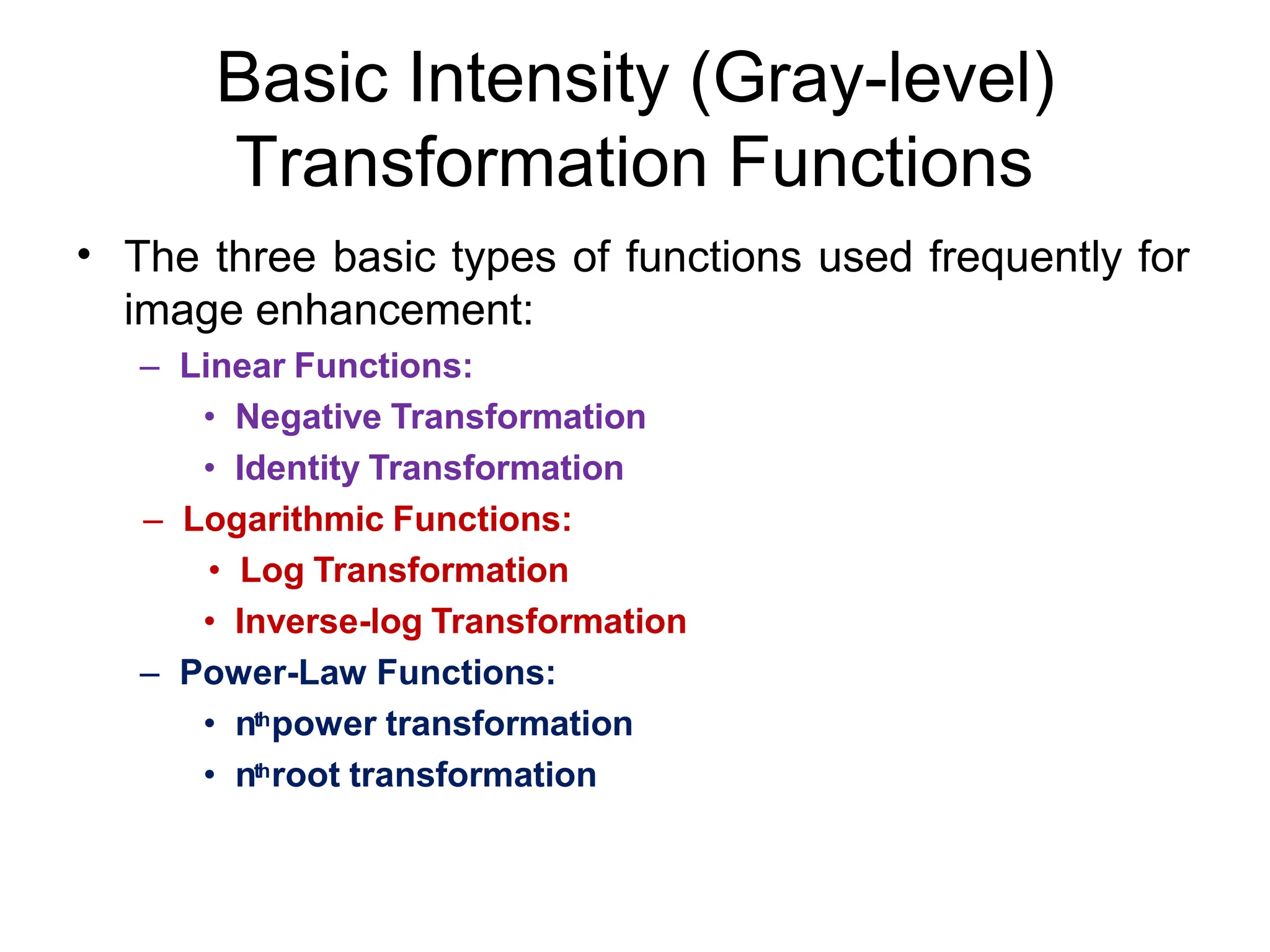
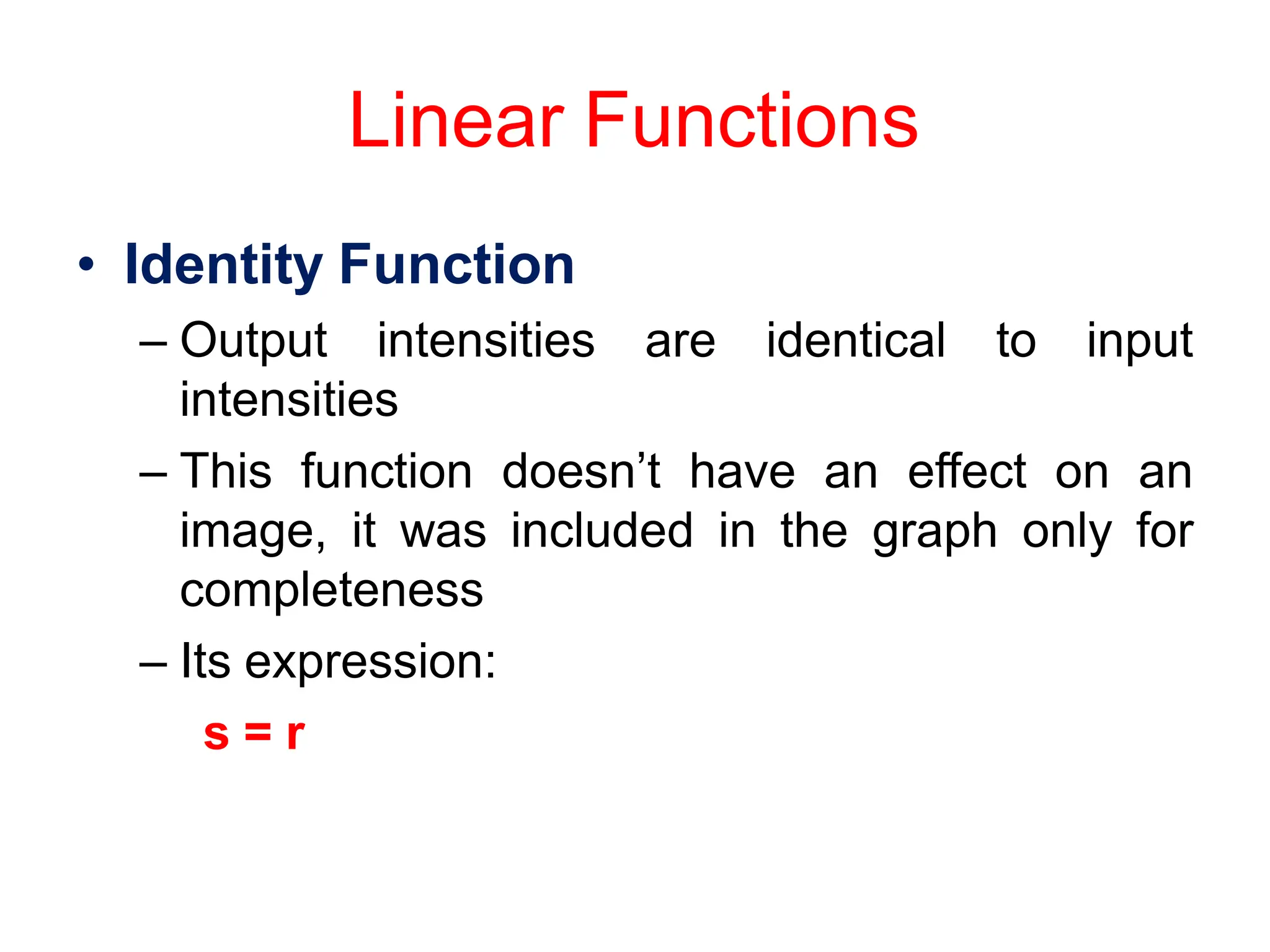
![Linear Functions
• Image Negatives (Negative Transformation)
– The negative of an image with gray level in the range [0, L-1],
where L = Largest value in an image, is obtained by using the
negative transformation’s expression:
s = L – 1 – r
Which reverses the intensity levels of an input image, in this
manner produces the equivalent of a photographic negative.
– The negative transformation is suitable for enhancing white
or gray detail embedded in dark regions of an image,
especially when the black area are dominant in size](https://image.slidesharecdn.com/unit2-240112073404-2762ccf4/75/Unit-2-Image-Enhancement-in-Spatial-Domain-pptx-14-2048.jpg)

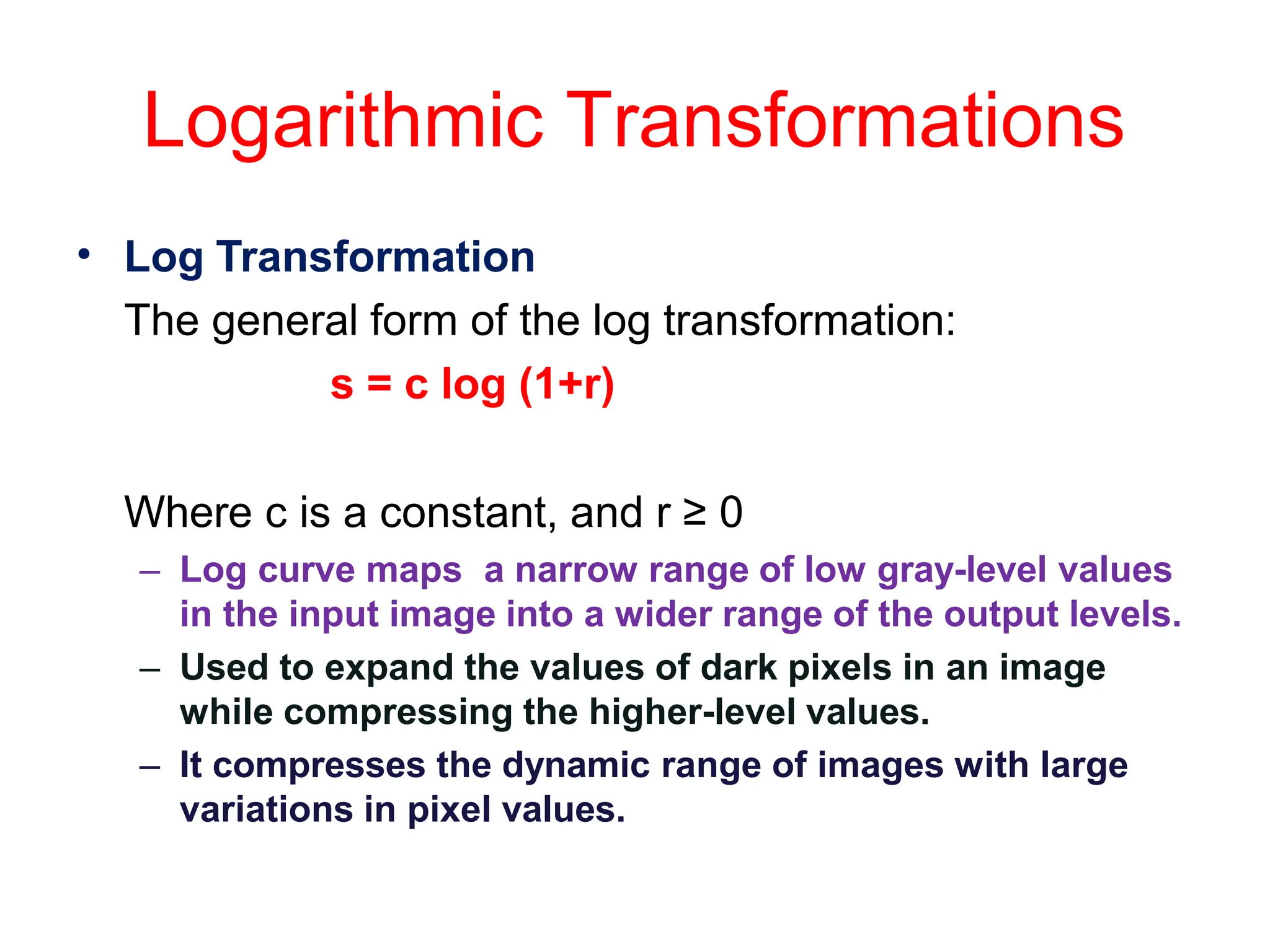
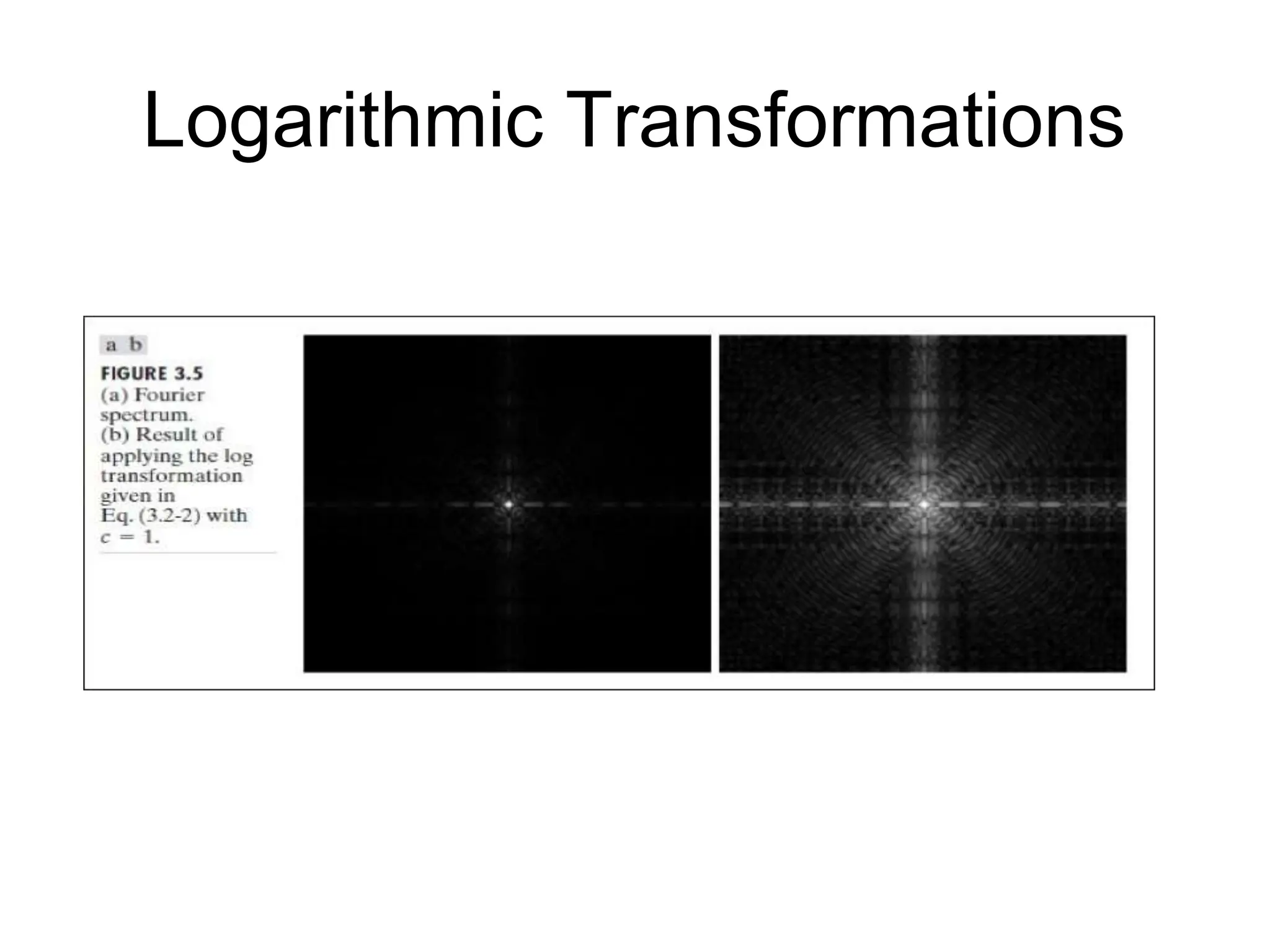
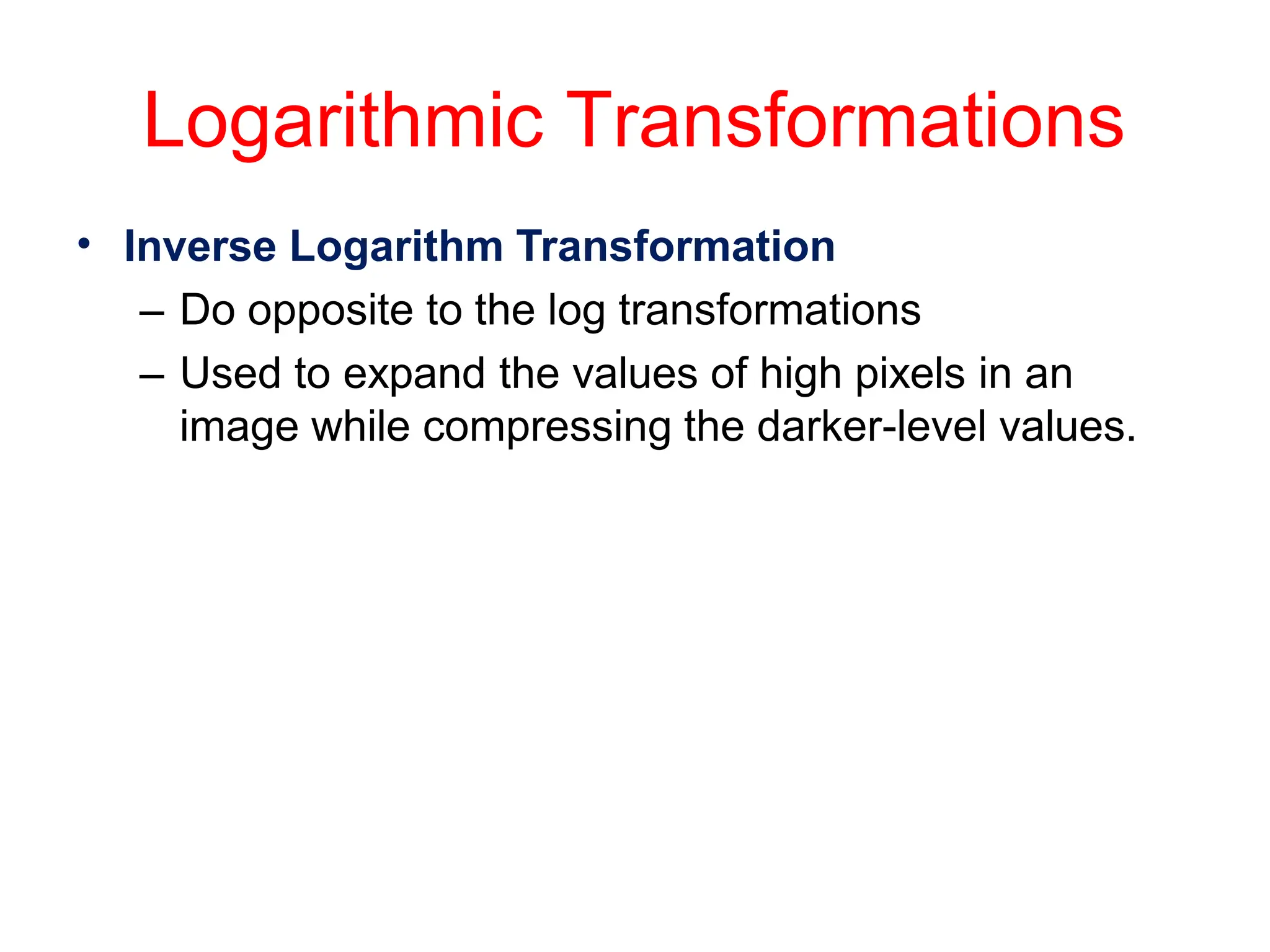
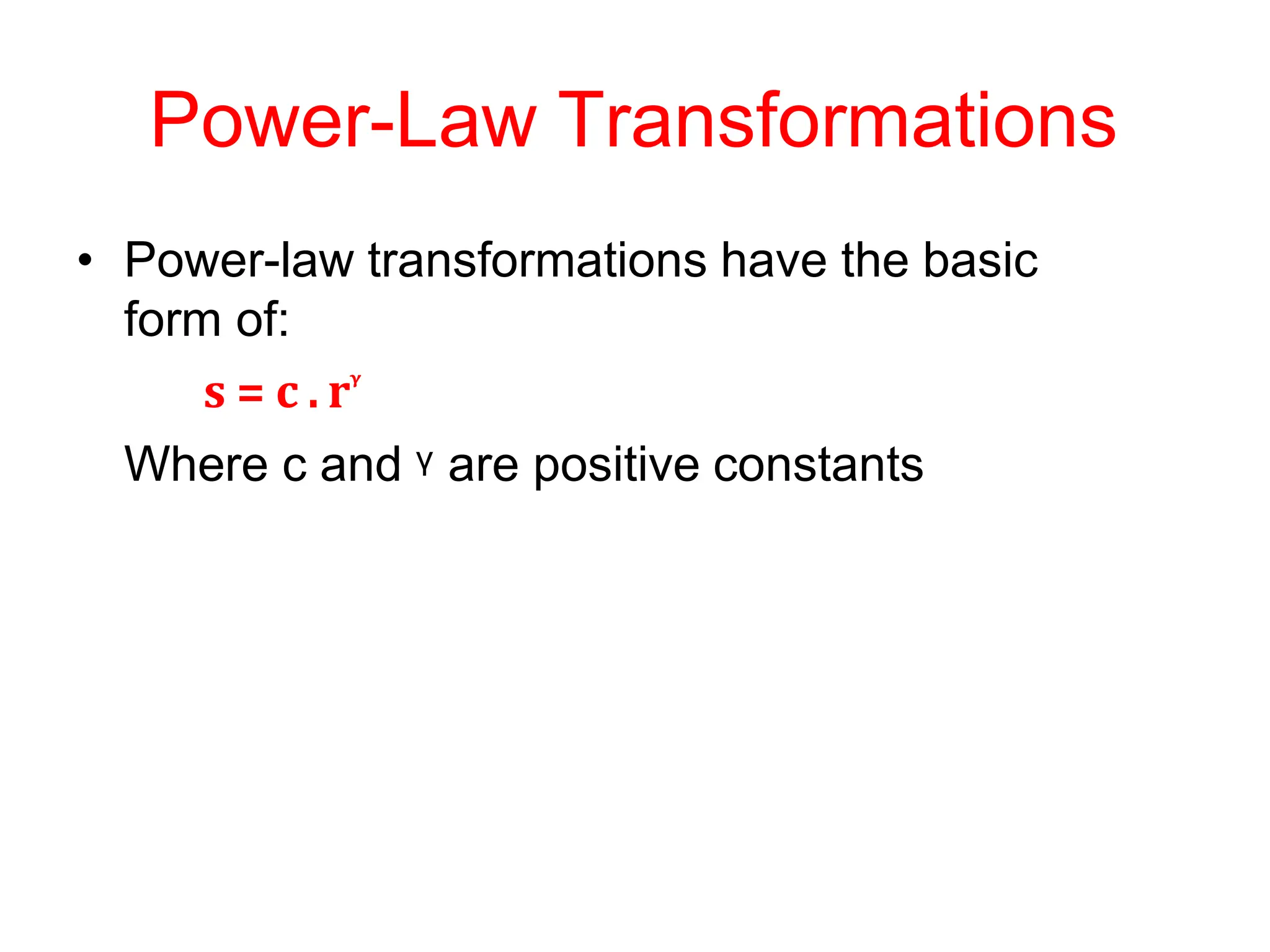

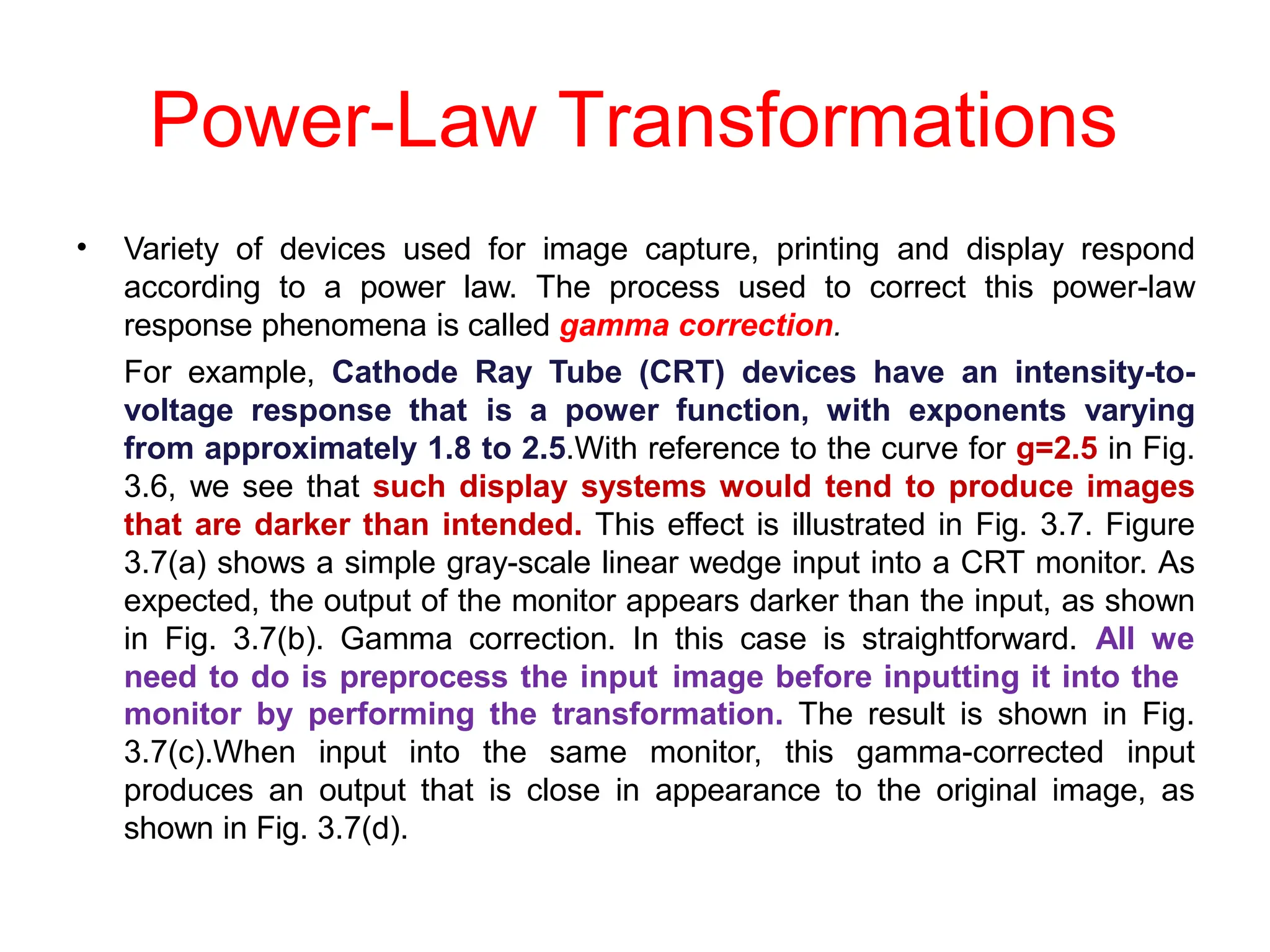
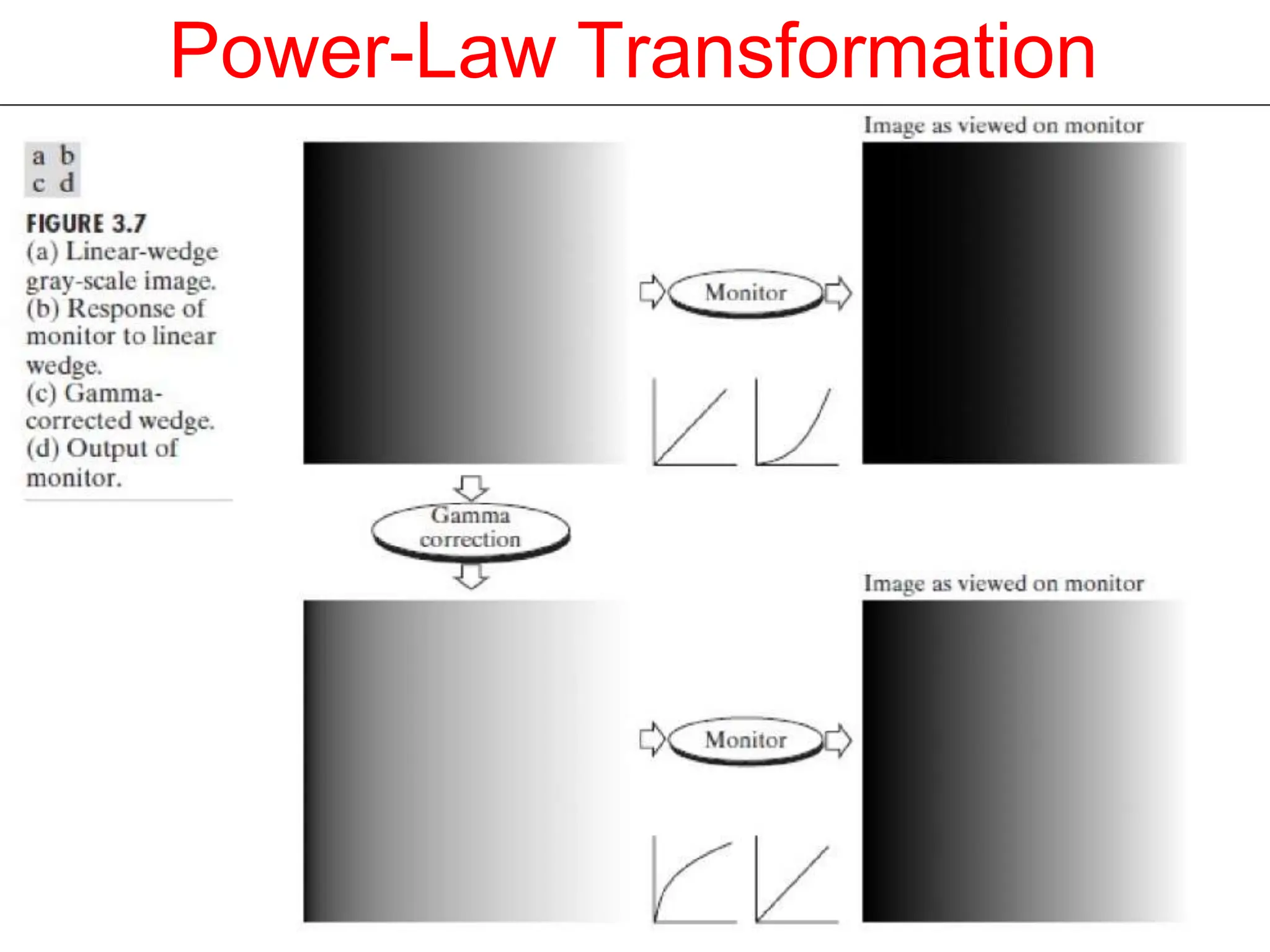
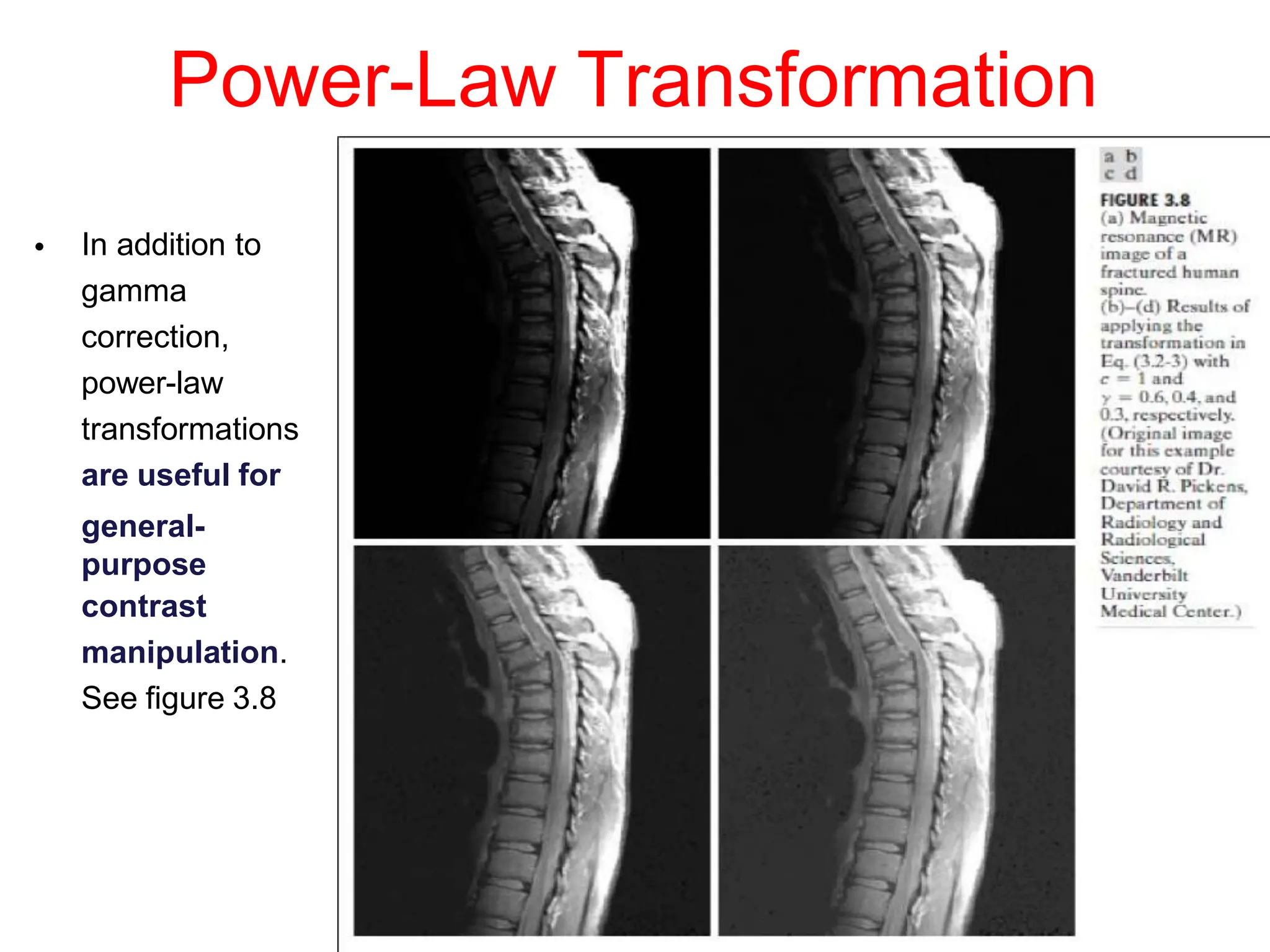
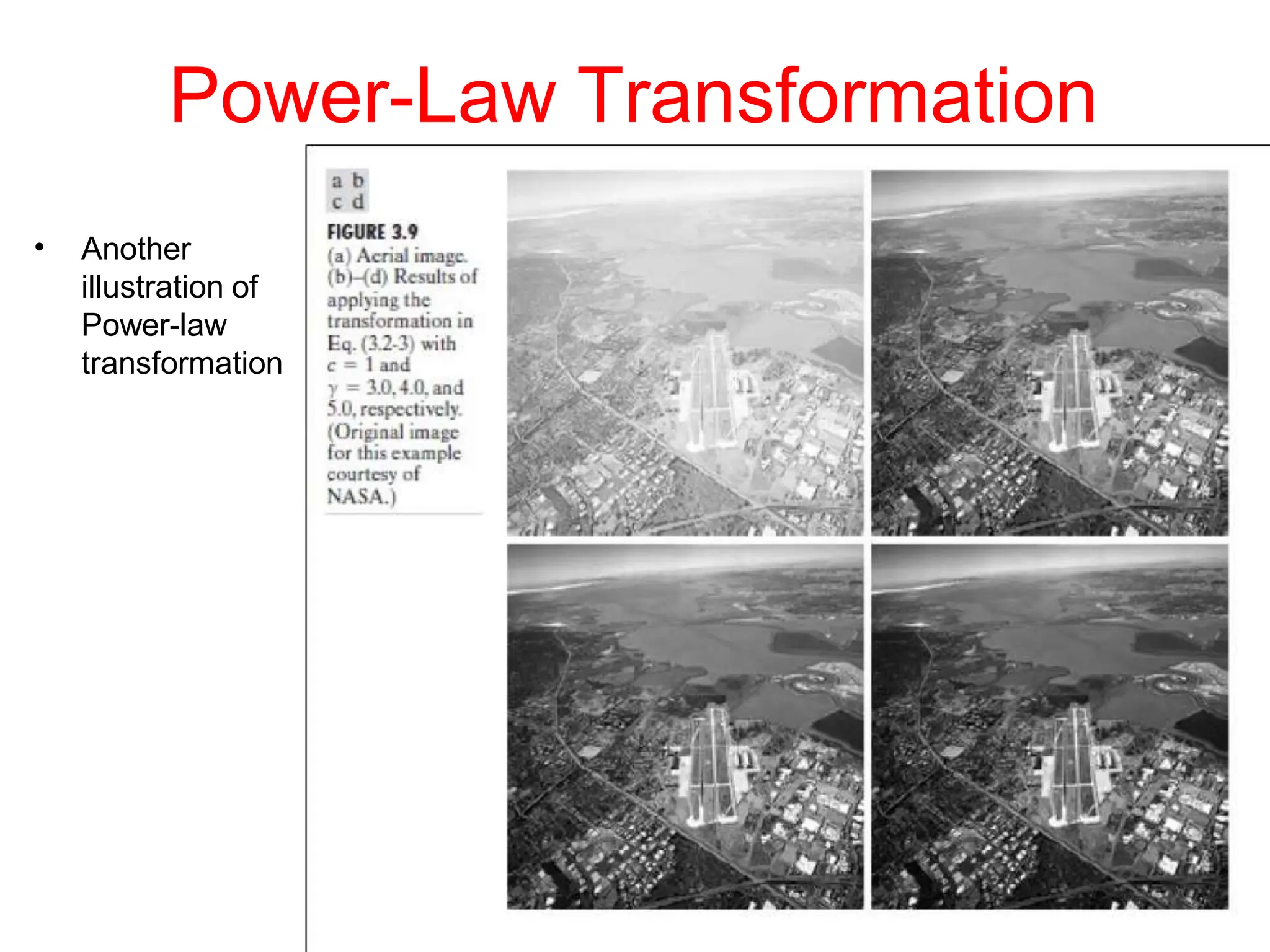

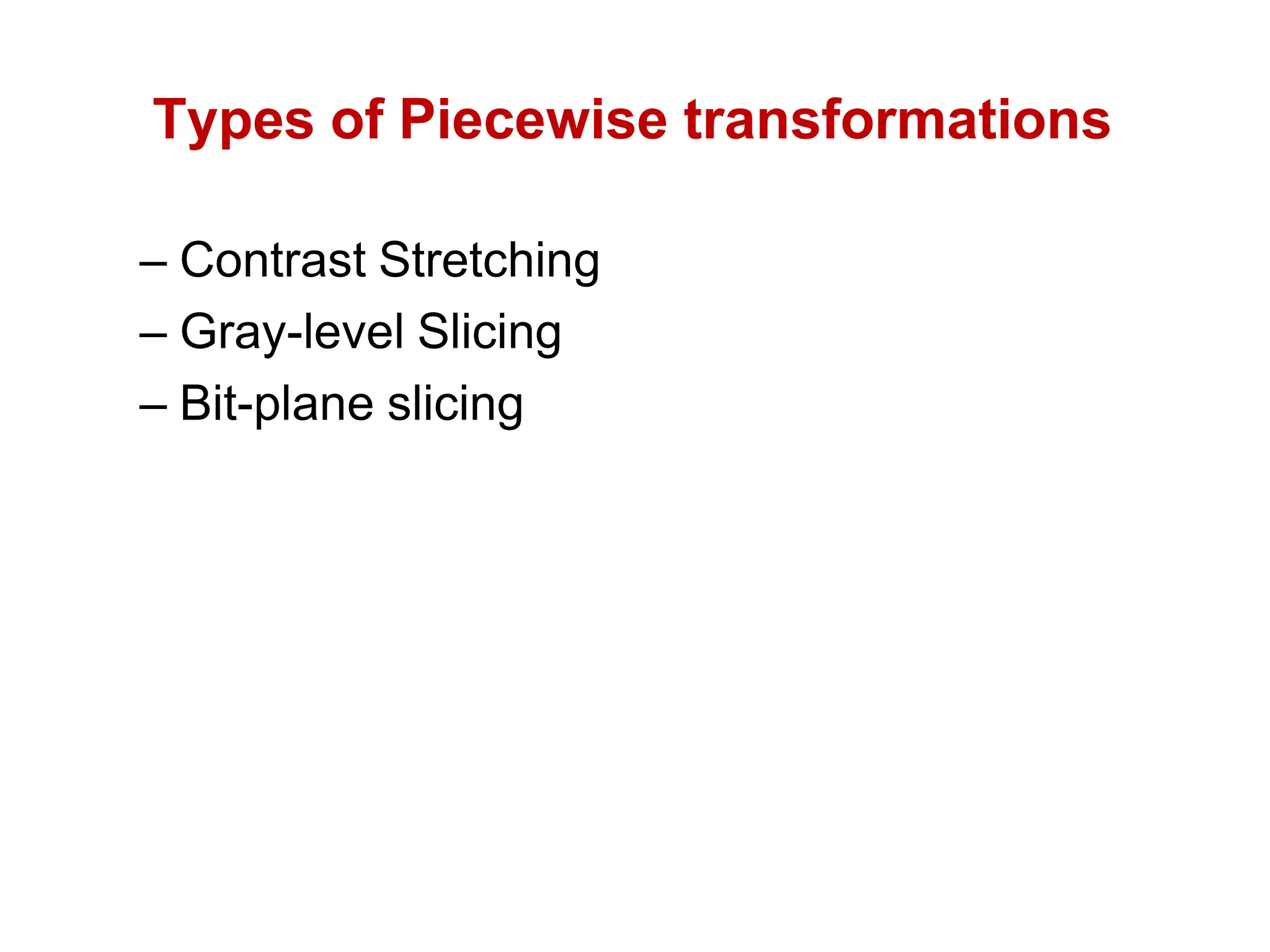
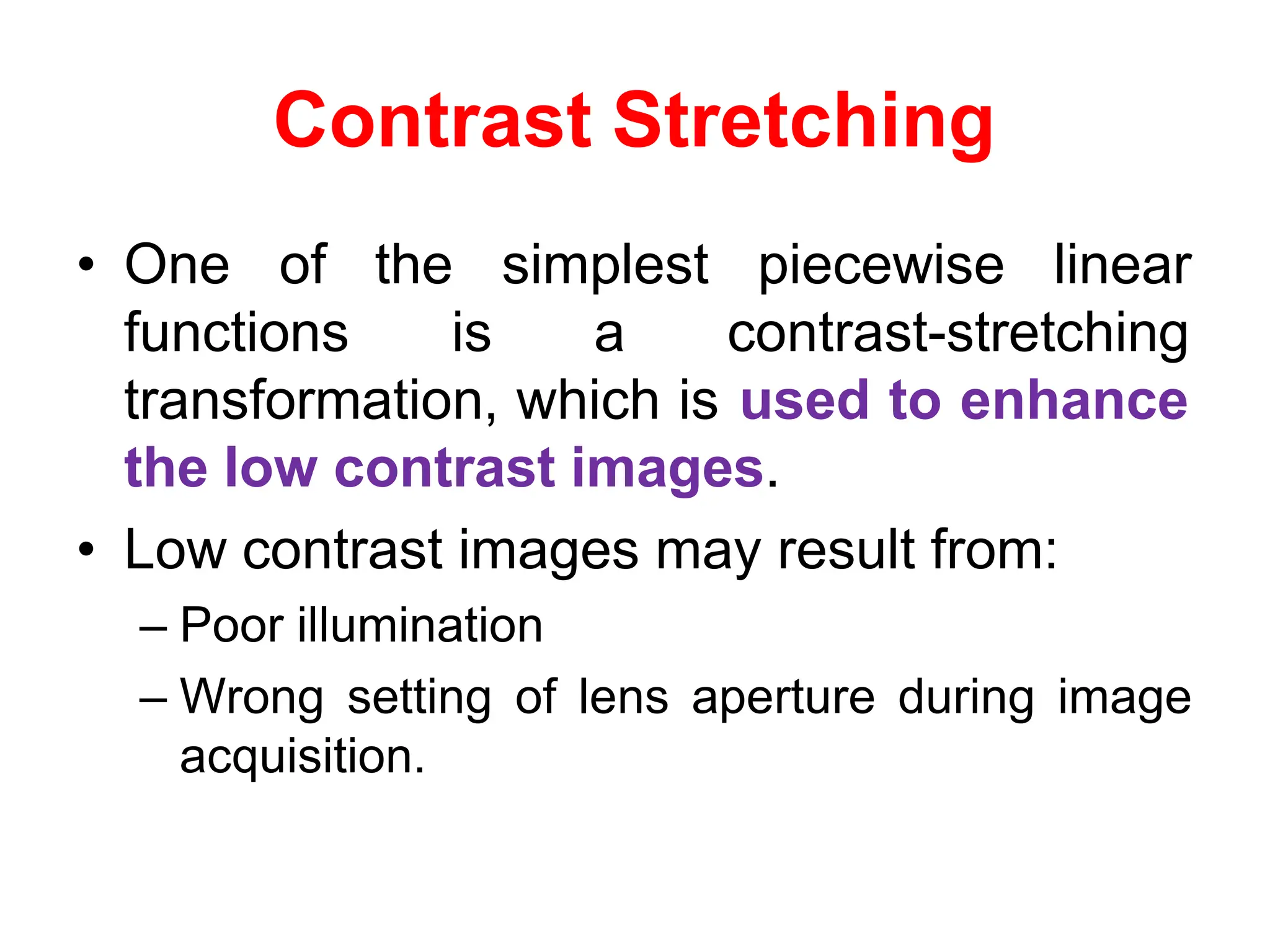
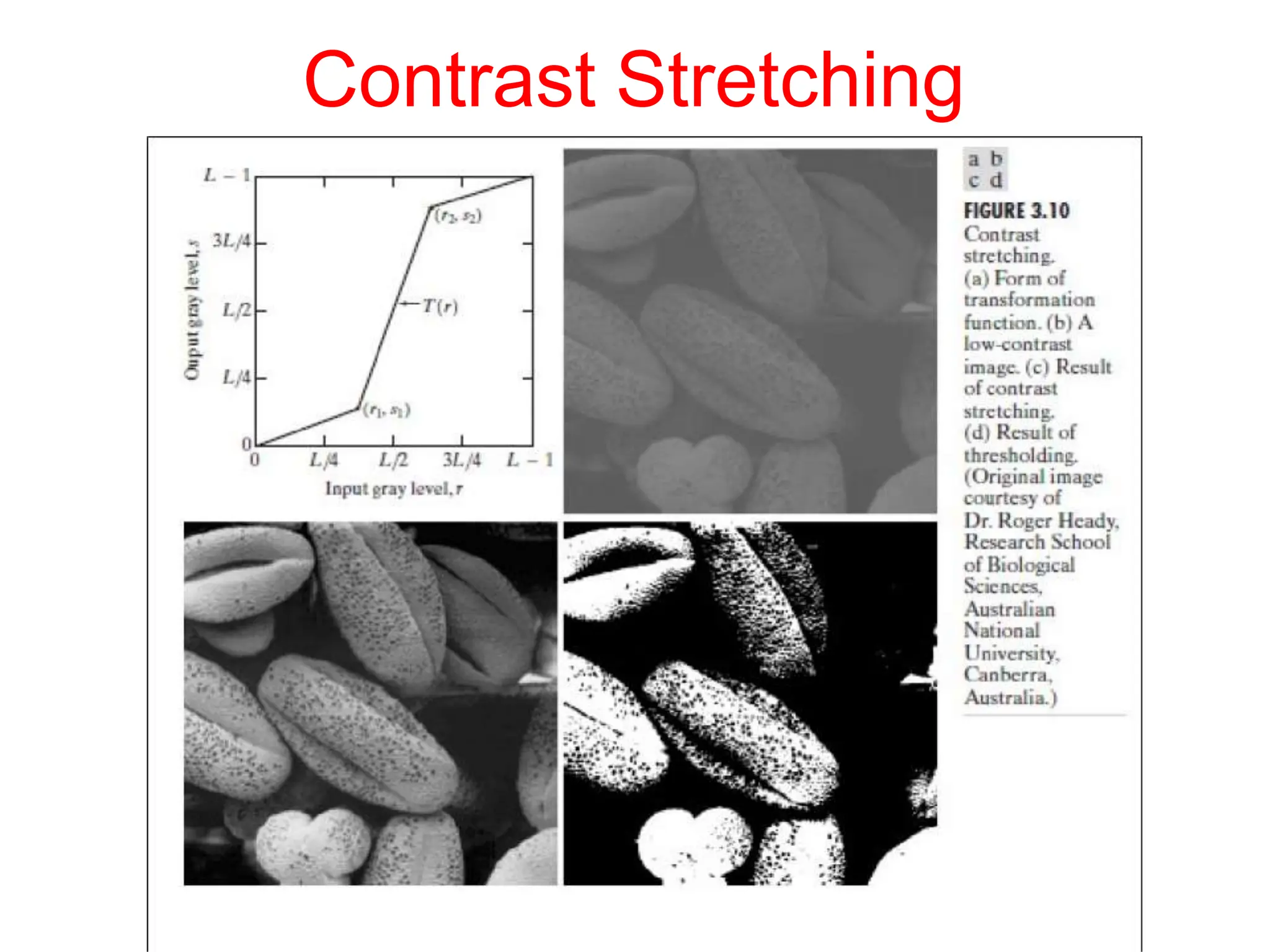
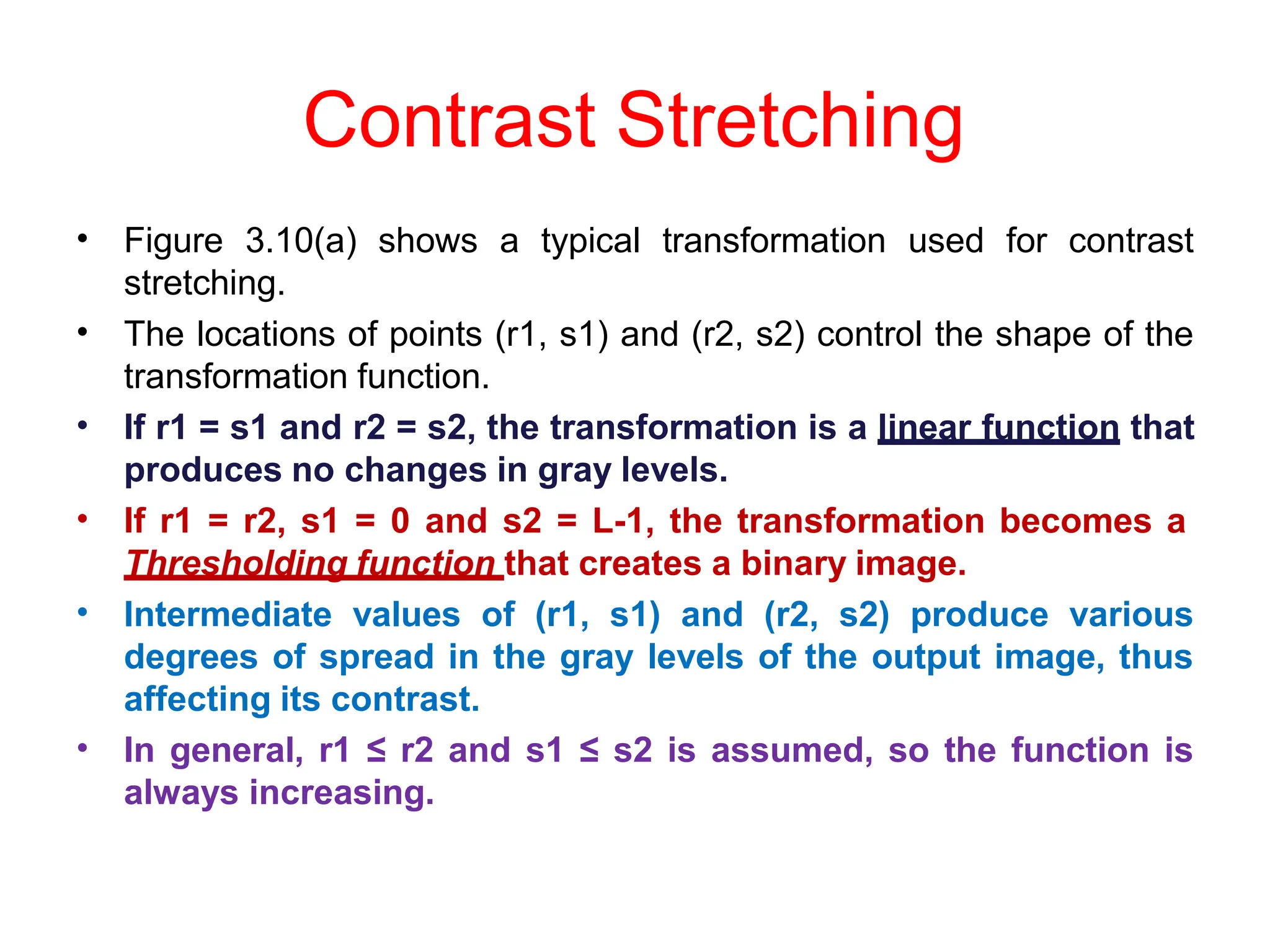
![Contrast Stretching
• Figure 3.10(b) shows an 8-bit image with low contrast.
• Fig. 3.10(c) shows the result of contrast stretching, obtained by
setting (r1, s1) = (rmin, 0) and (r2, s2) = (rmax,L-1) where rminand rma
x
denote the minimum and maximum gray levels in the image,
respectively. Thus, the transformation function stretched the levels
linearly from their original range to the full range [0, L-1].
• Finally, Fig. 3.10(d) shows the result of using the thresholding
function defined previously, with r1=r2=m, the mean gray level in the
image.](https://image.slidesharecdn.com/unit2-240112073404-2762ccf4/75/Unit-2-Image-Enhancement-in-Spatial-Domain-pptx-30-2048.jpg)
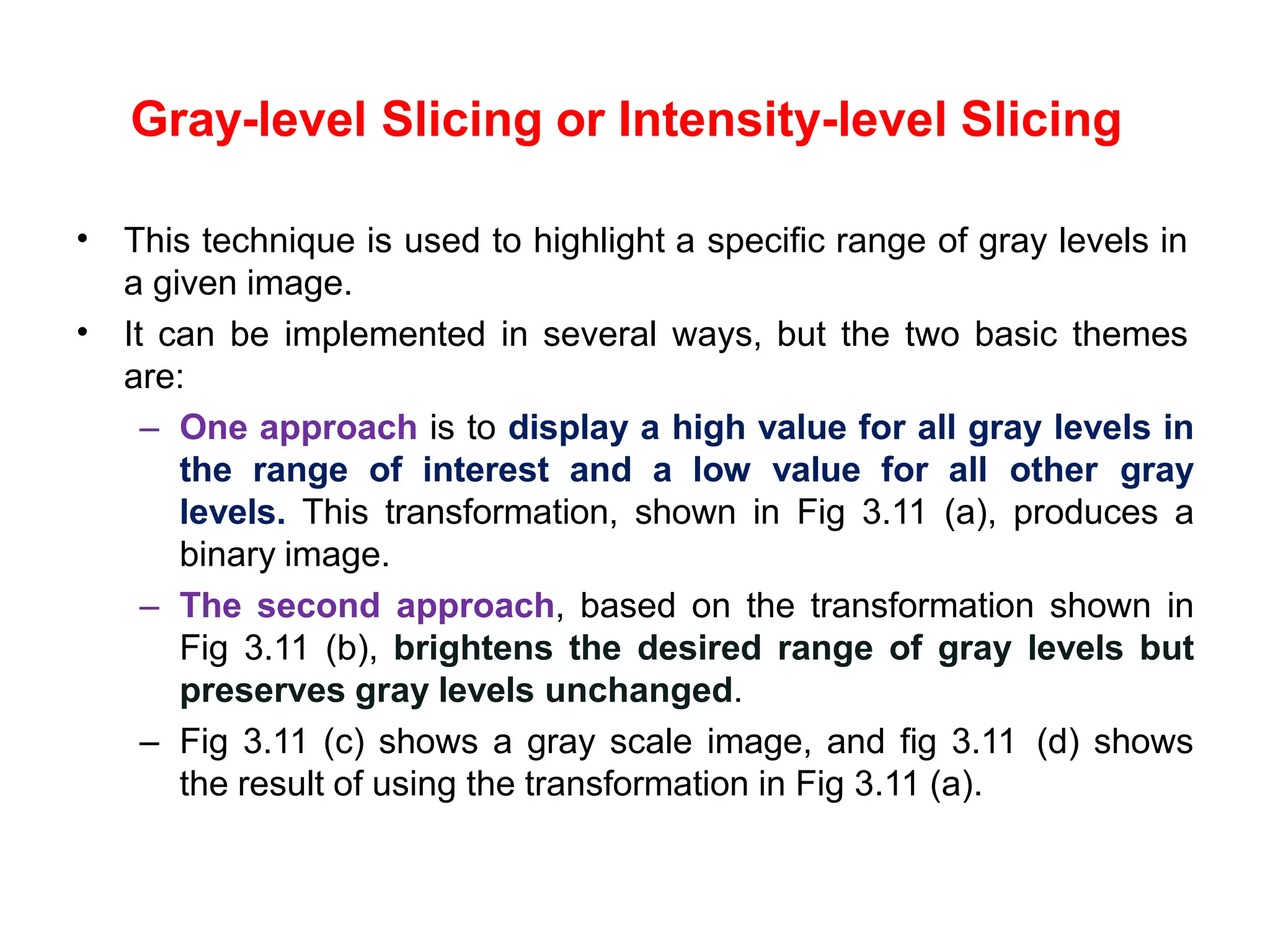

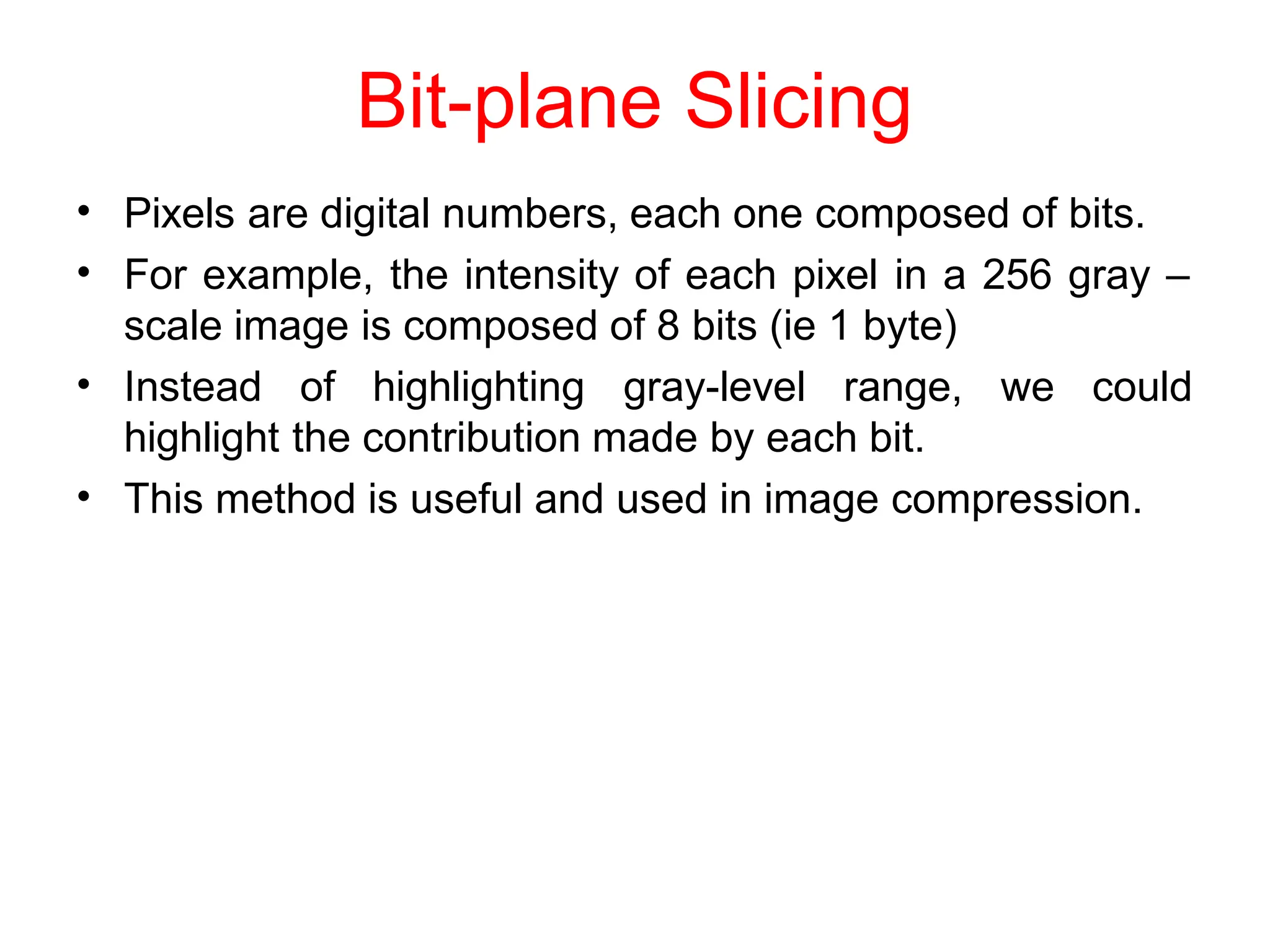

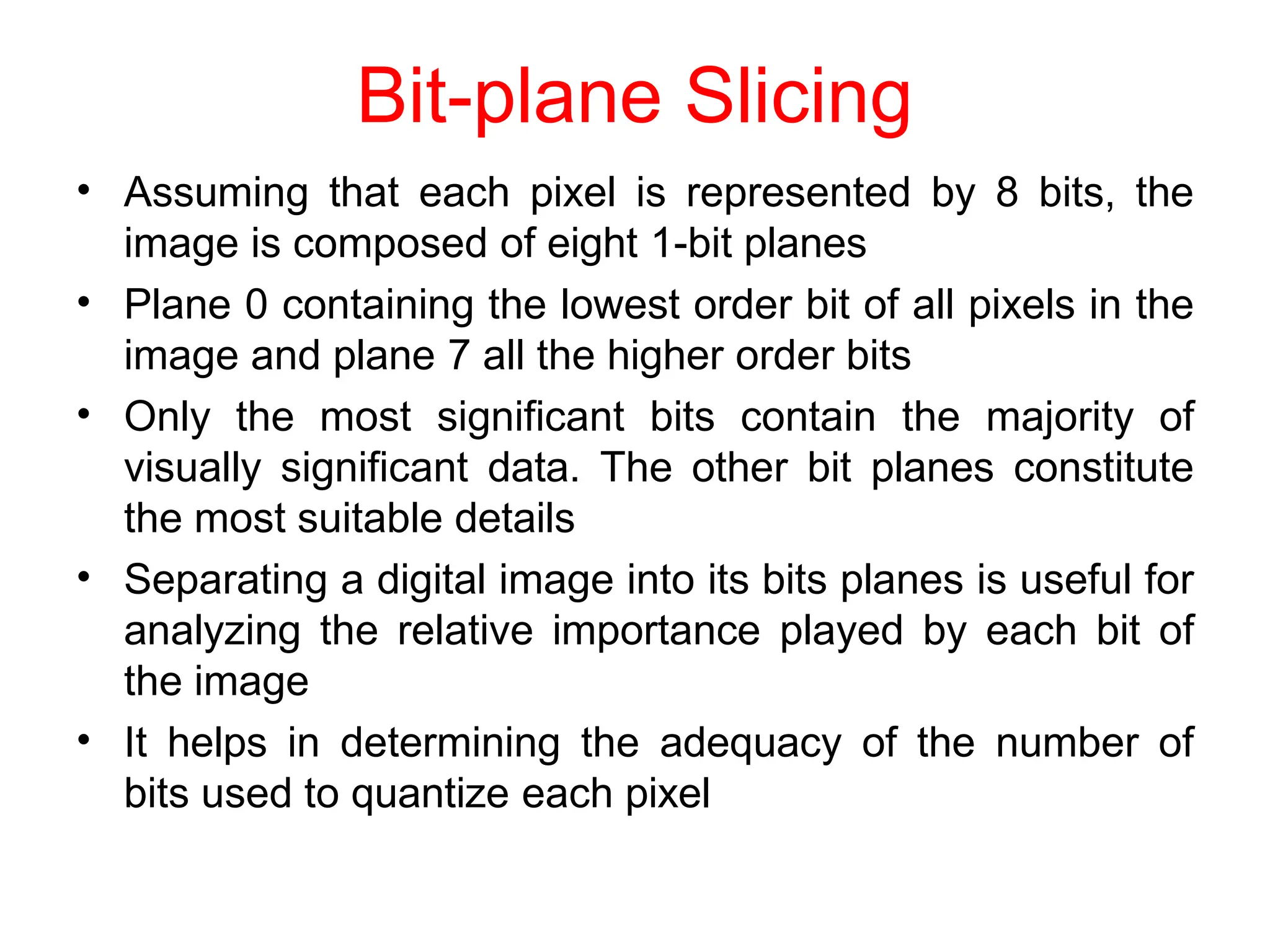
![Histogram Processing
• Histograms are the basis for numerous spatial domain processing
techniques. Histogram manipulation can be used effectively for
image enhancement.
• The histogram of a digital image with gray levels in the range [0,L-1] is a
discrete function h(rk)=nk, where rk is the kth gray level and nk is the
number of pixels in the image having gray level rk. It is common
practice to normalize a histogram by dividing each of its values by the
total number of pixels in the image, denoted by n.Thus, a normalized
histogram is given by p(rk)=nk/n, for k=0,1,p,L-1.Loosely speaking,
p(rk) gives an estimate of the probability of occurrence of gray level rk.
Note that the sum of all components of a normalized histogram is equal
to 1. (negative and identity transformations)](https://image.slidesharecdn.com/unit2-240112073404-2762ccf4/75/Unit-2-Image-Enhancement-in-Spatial-Domain-pptx-36-2048.jpg)
